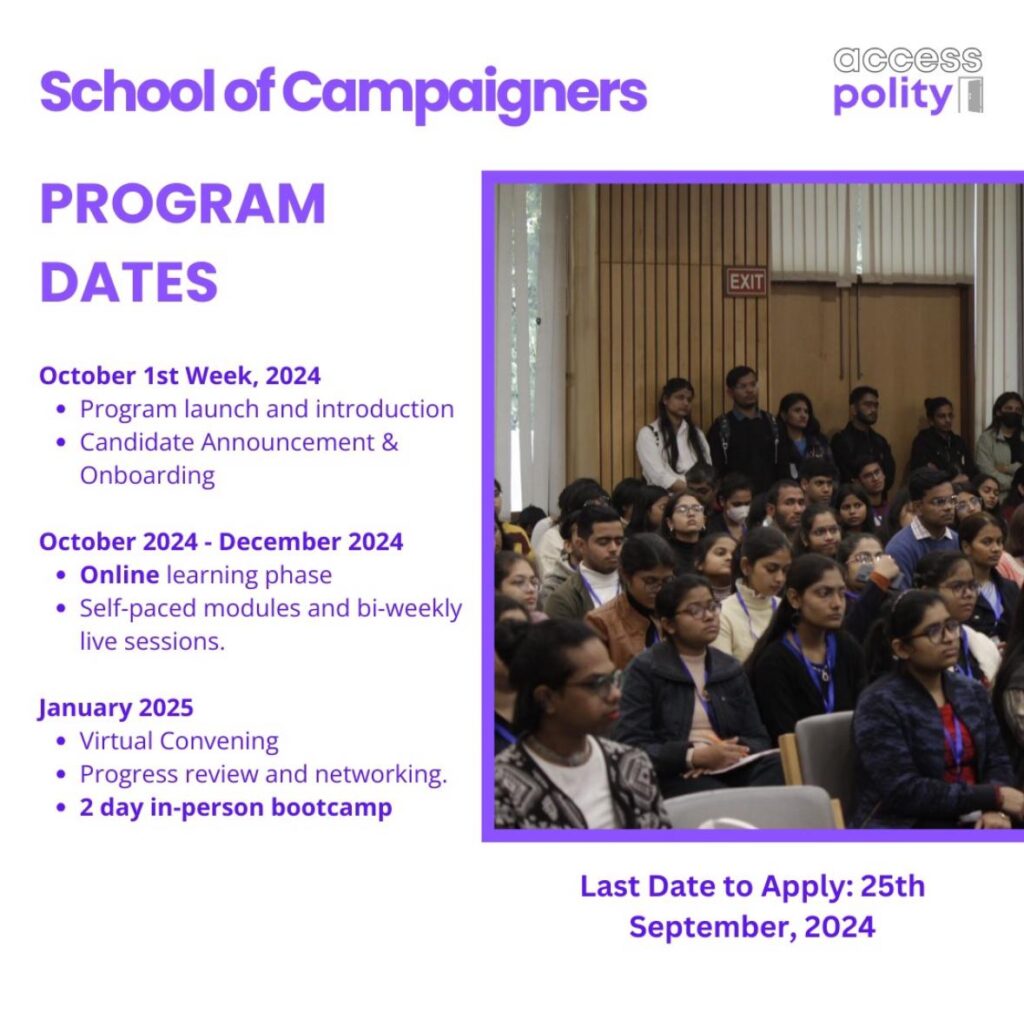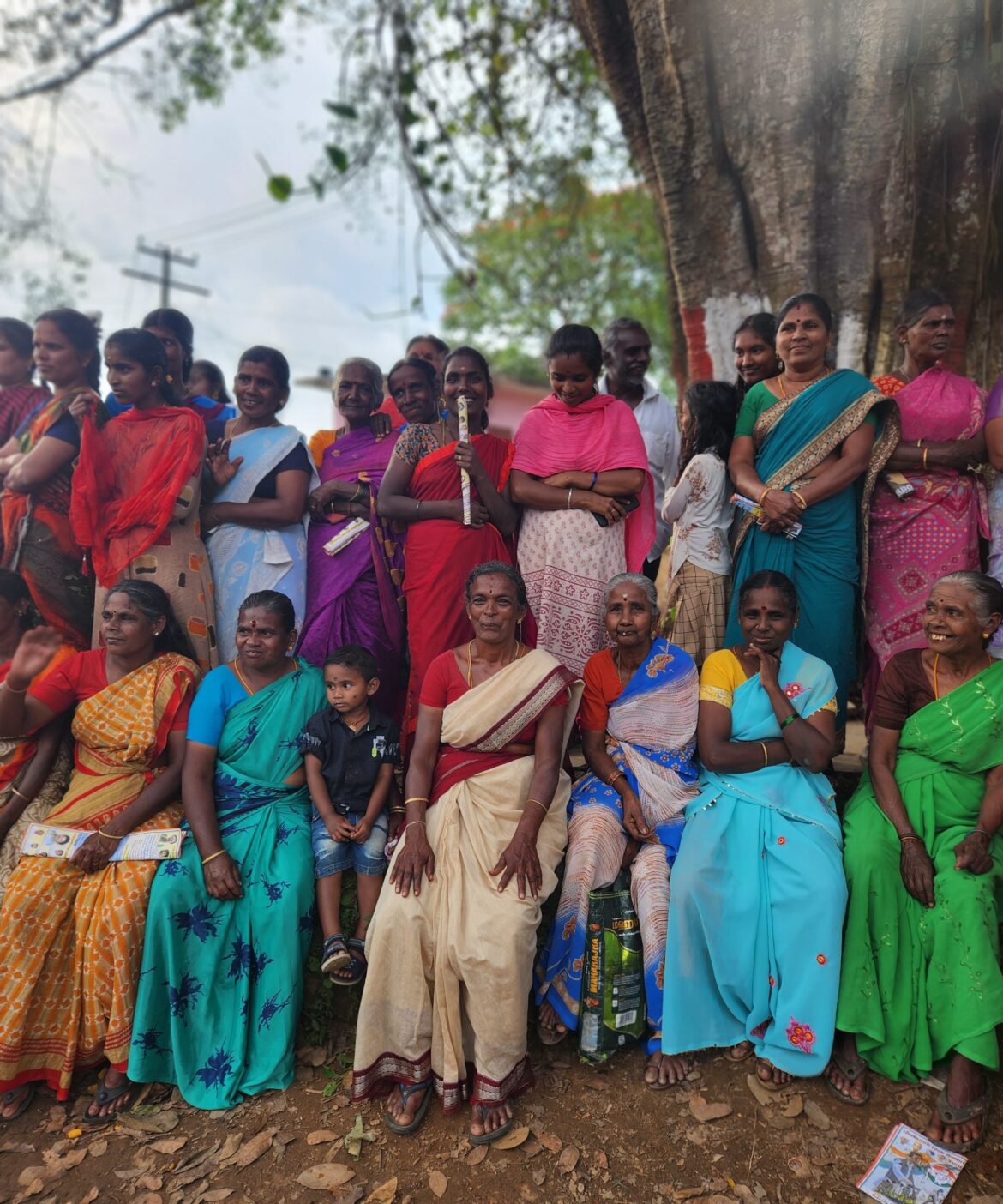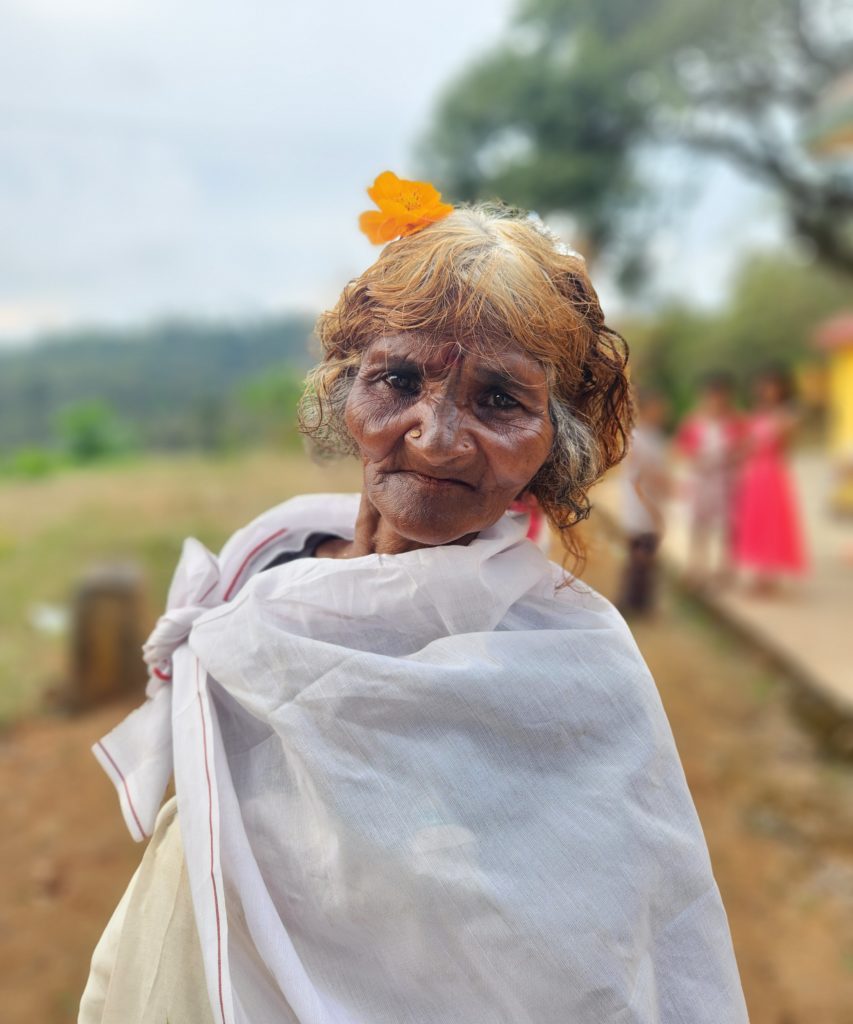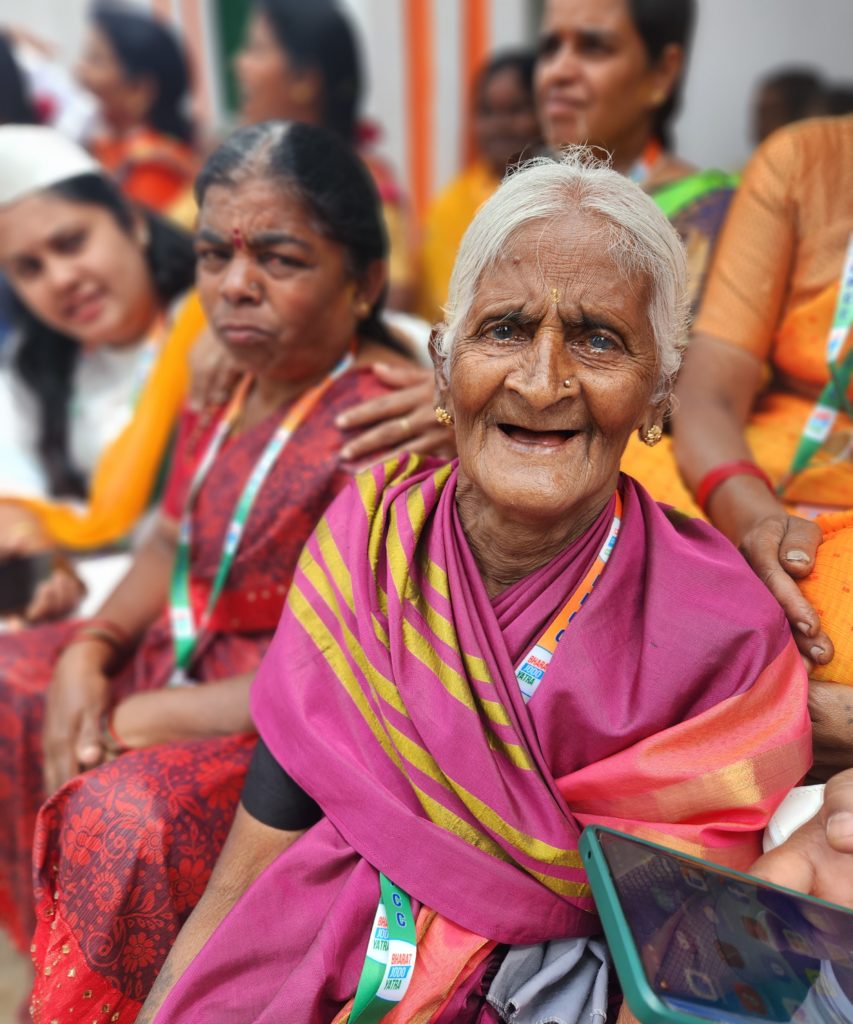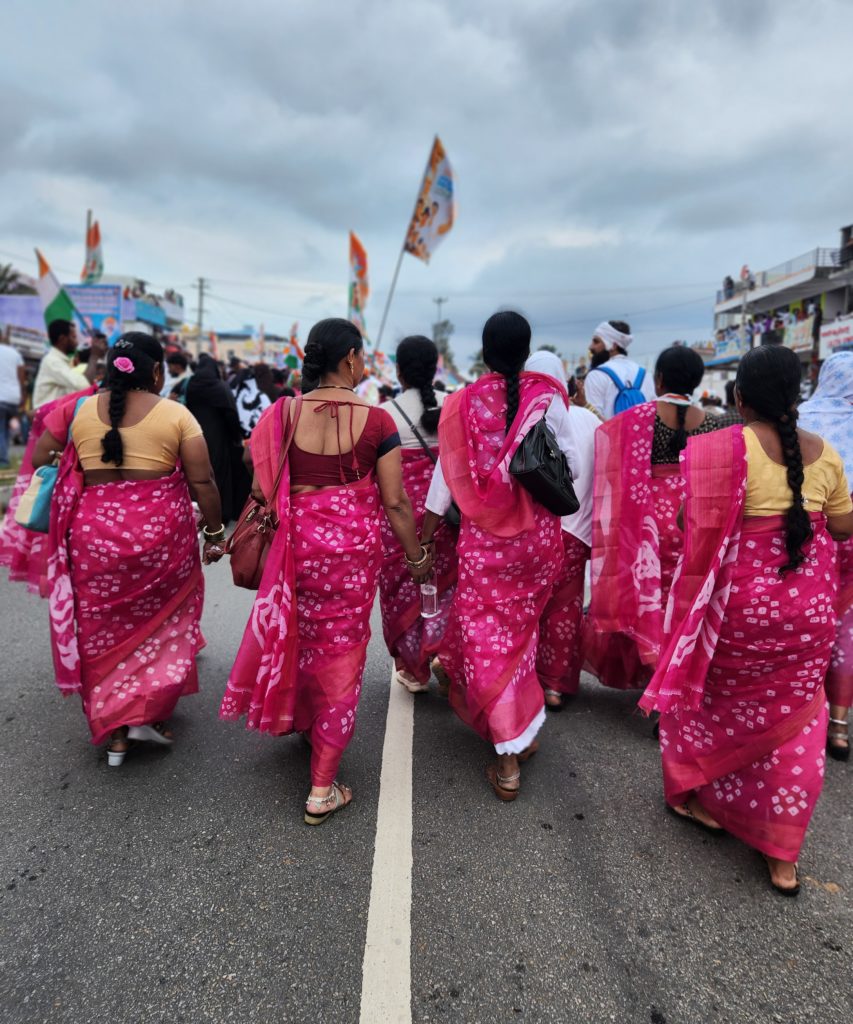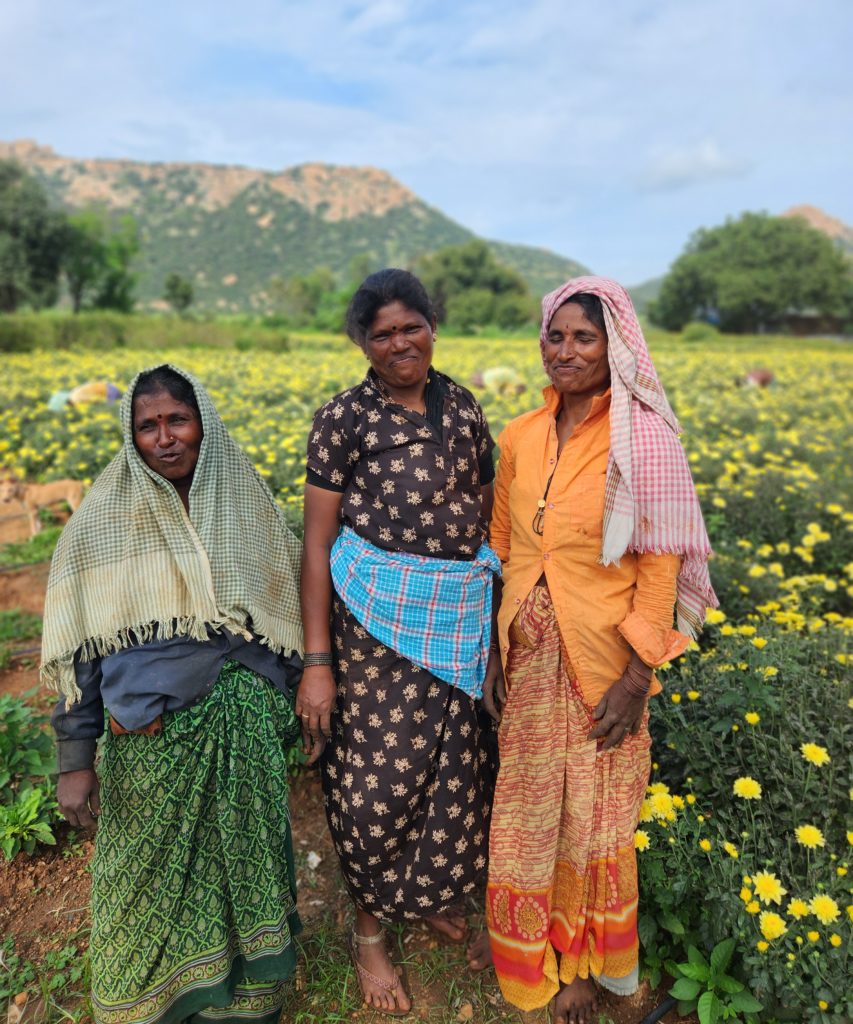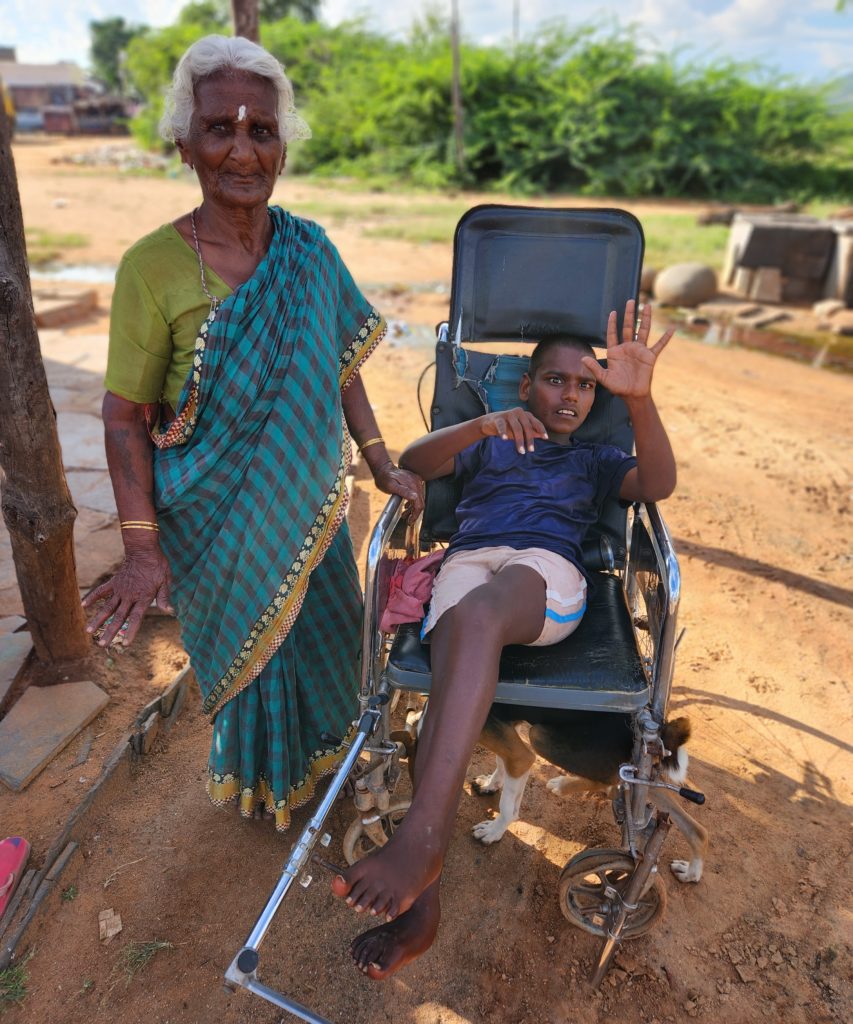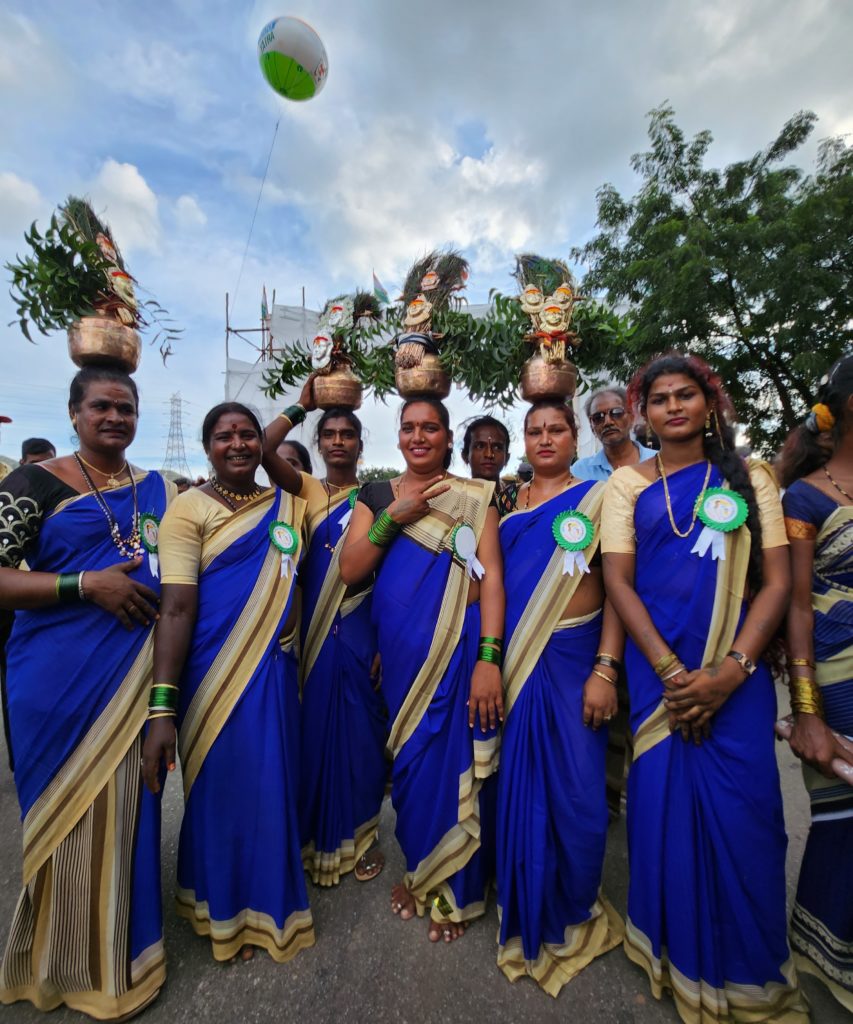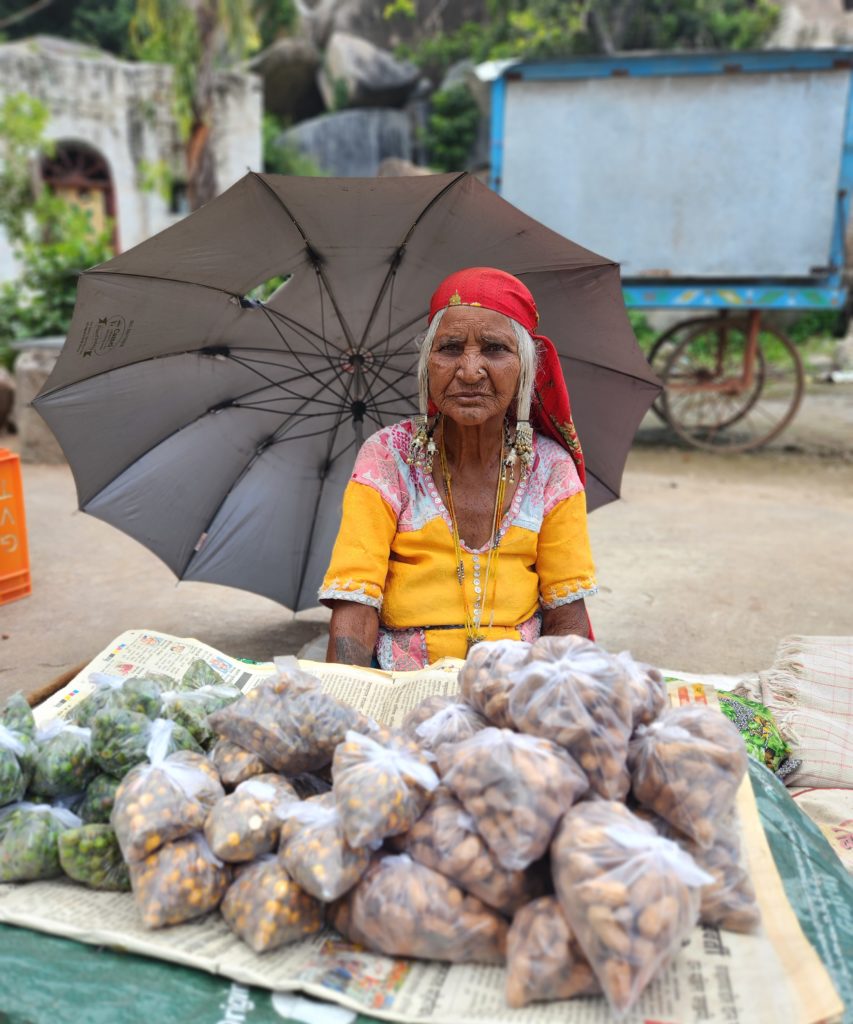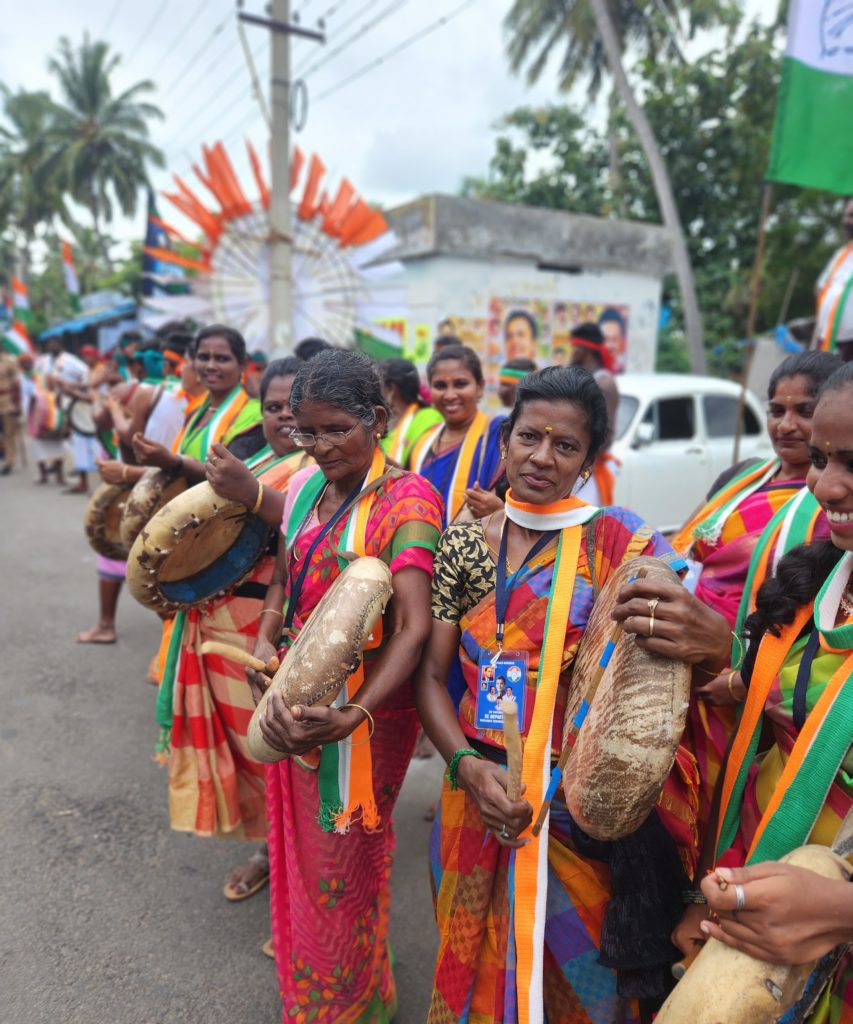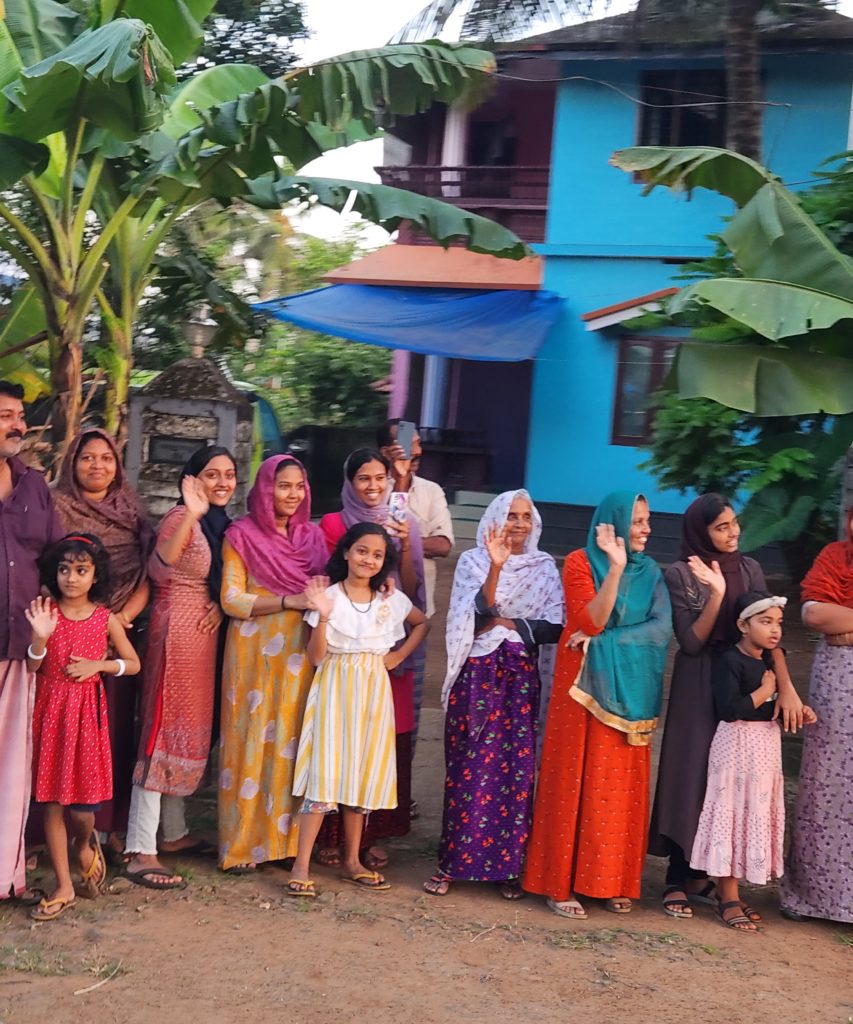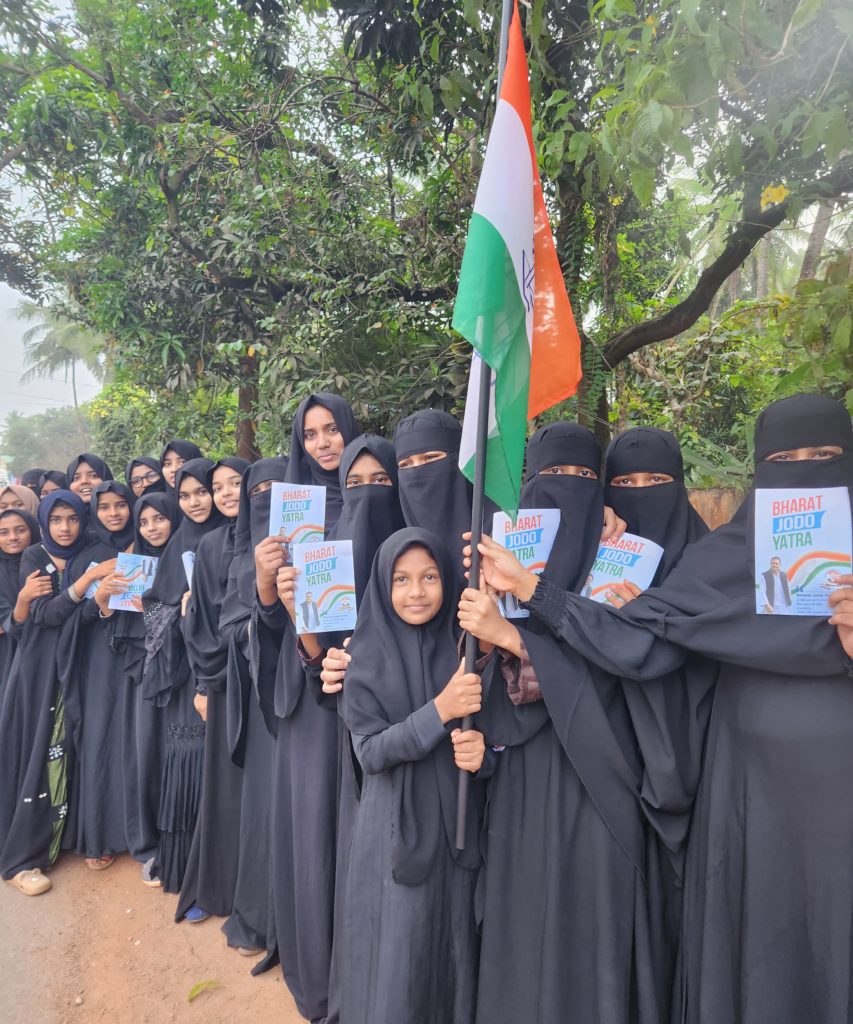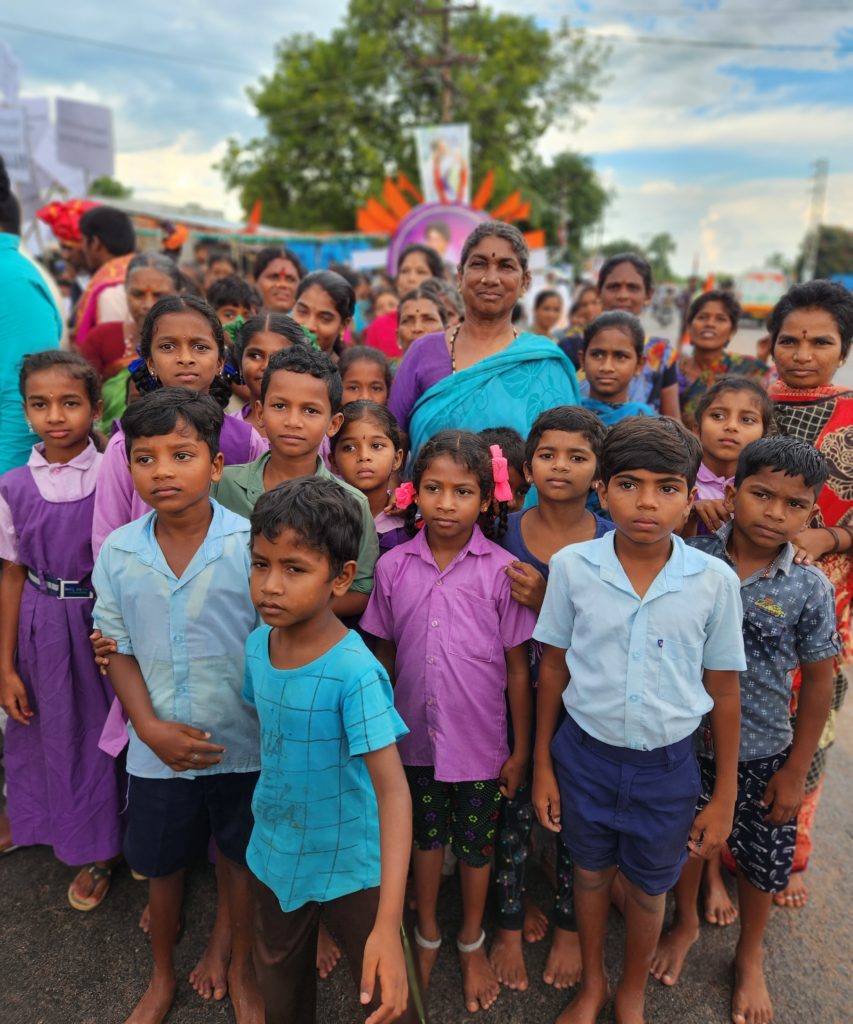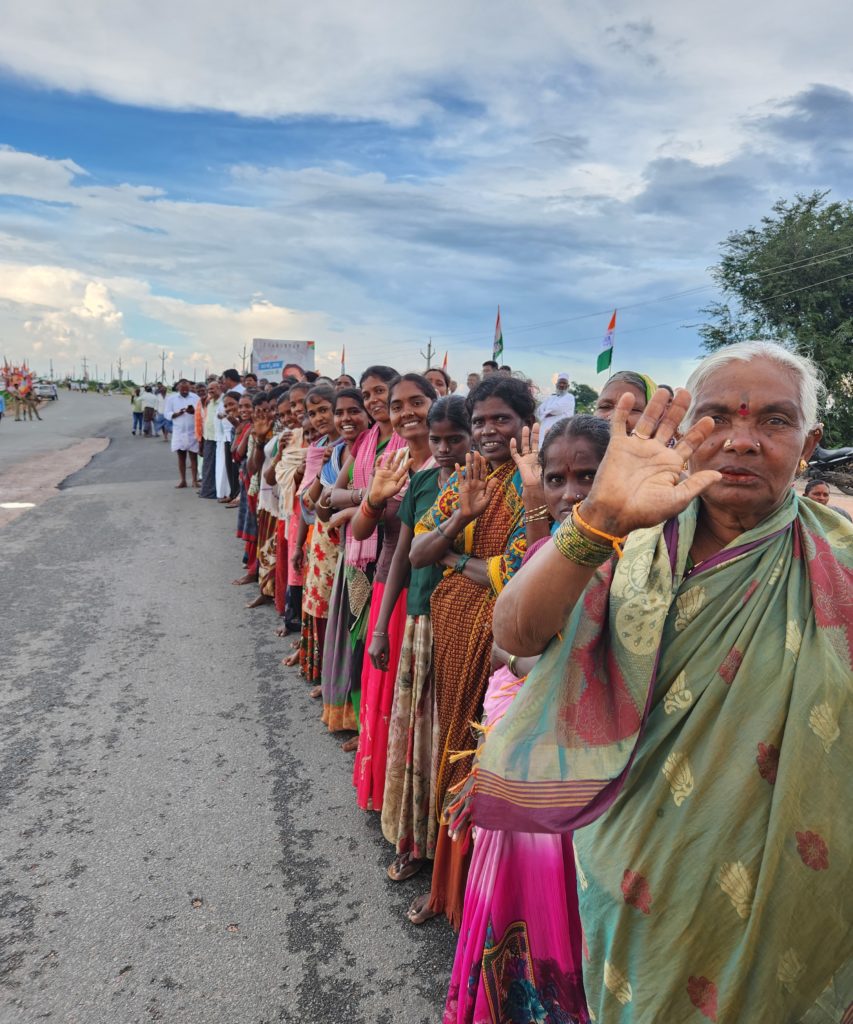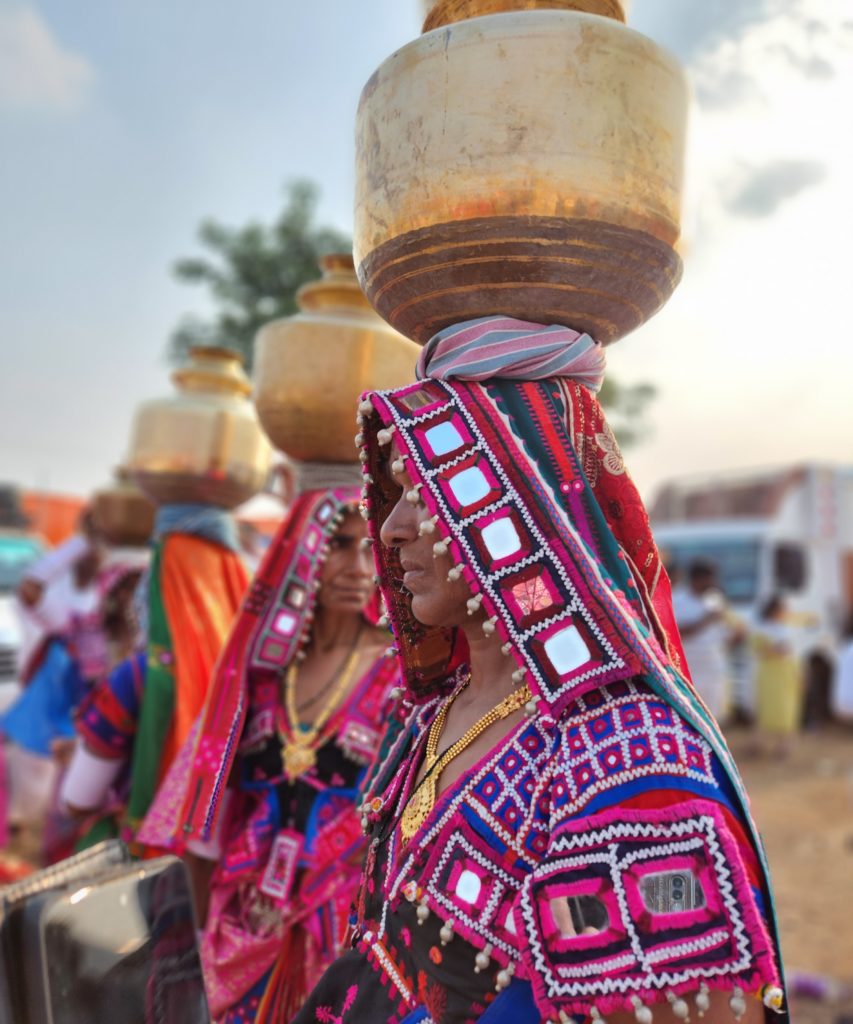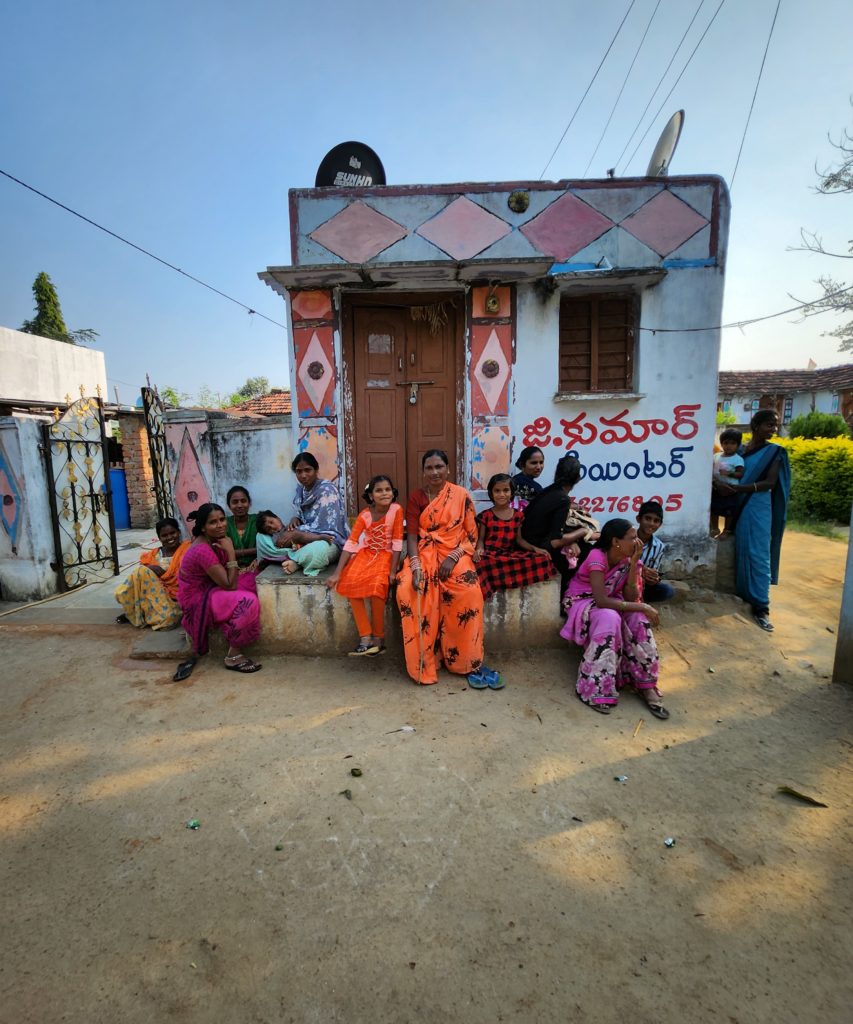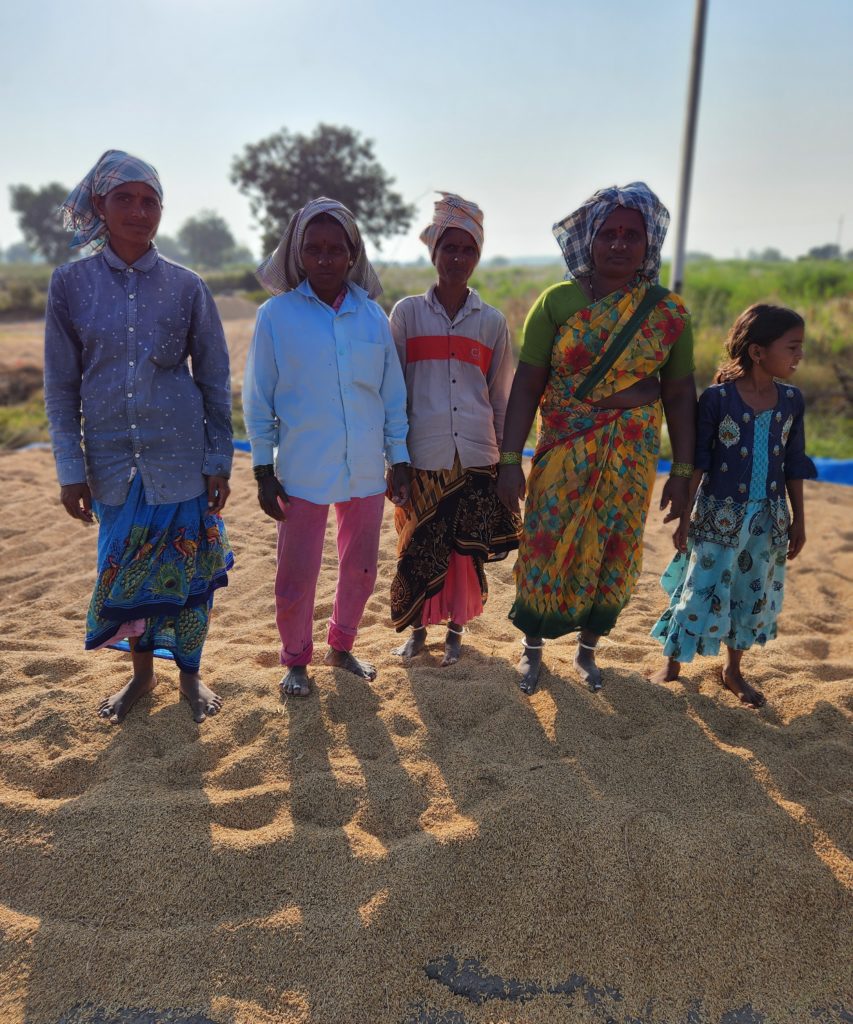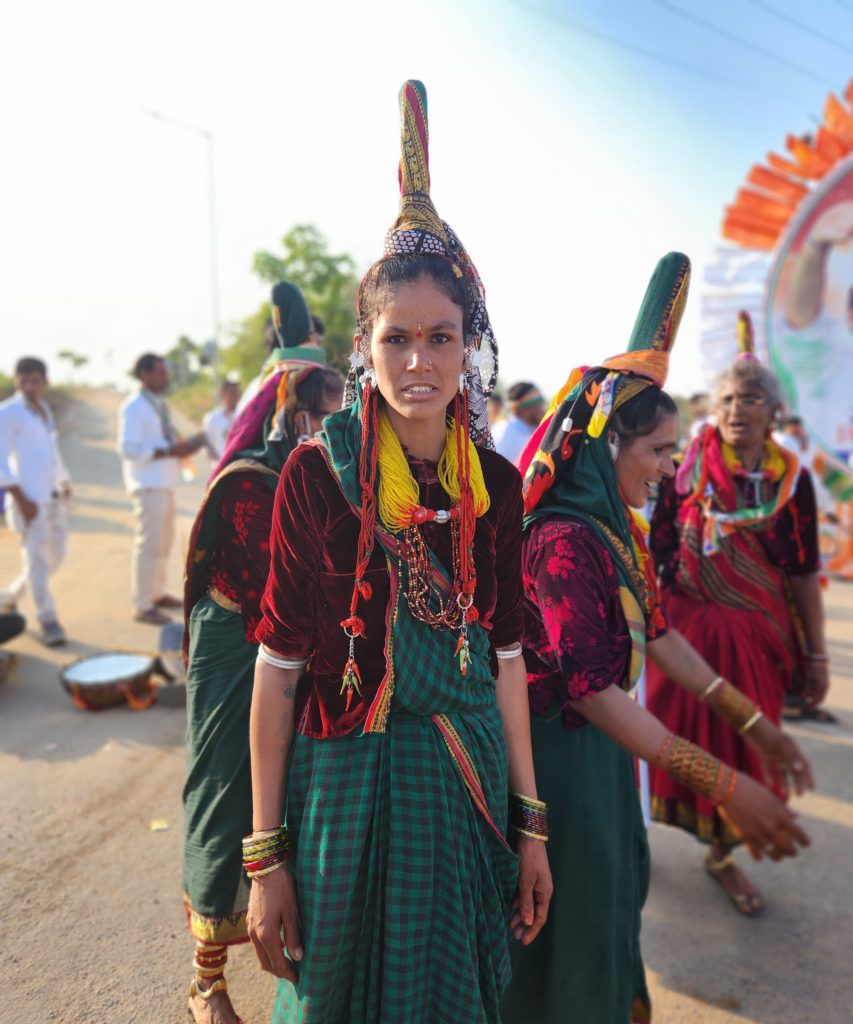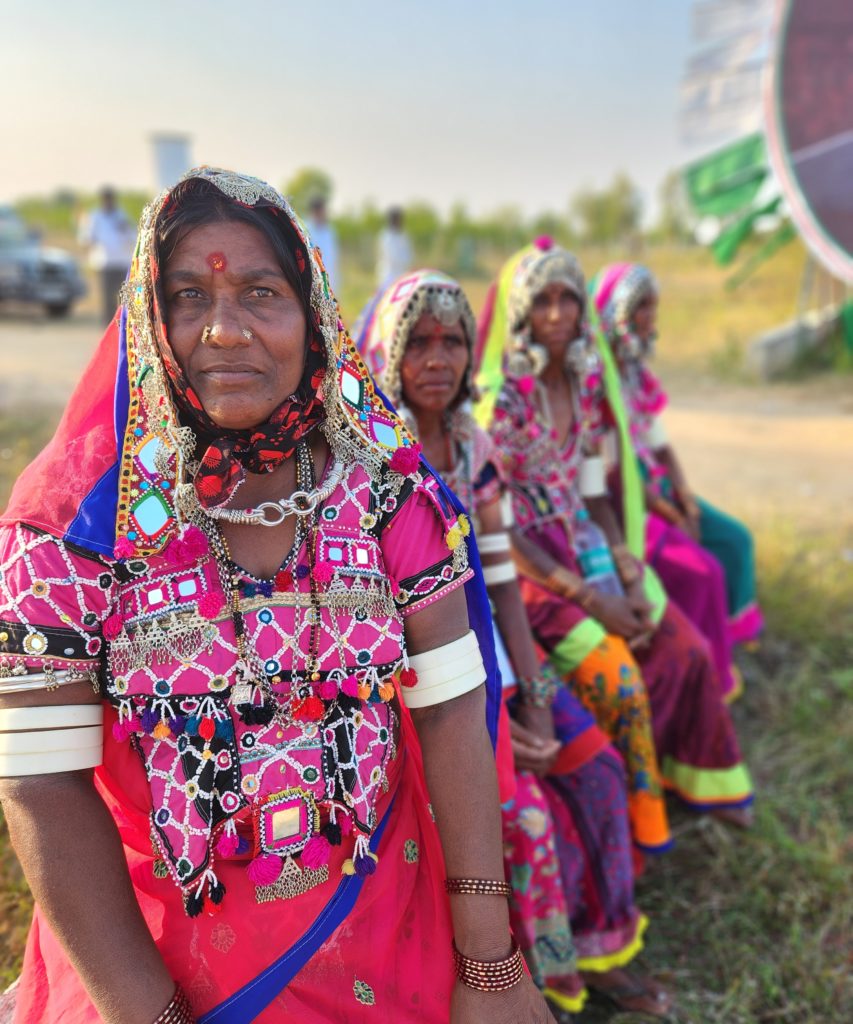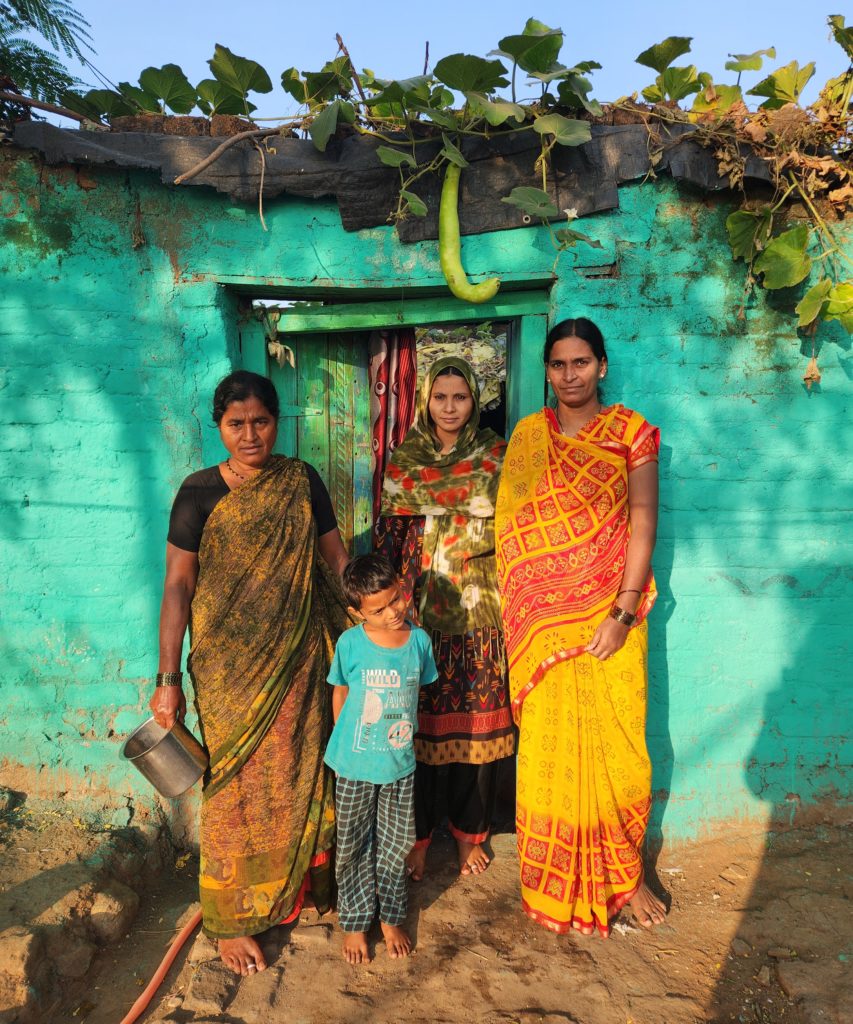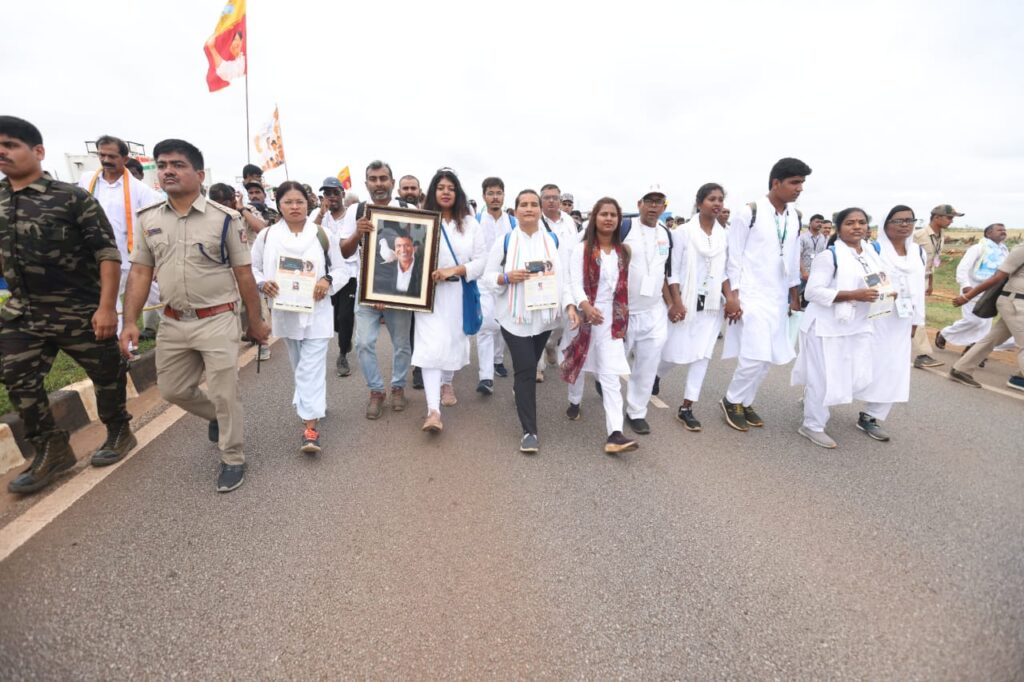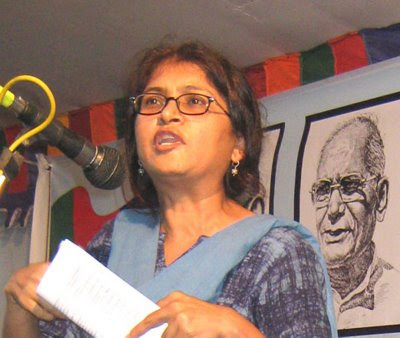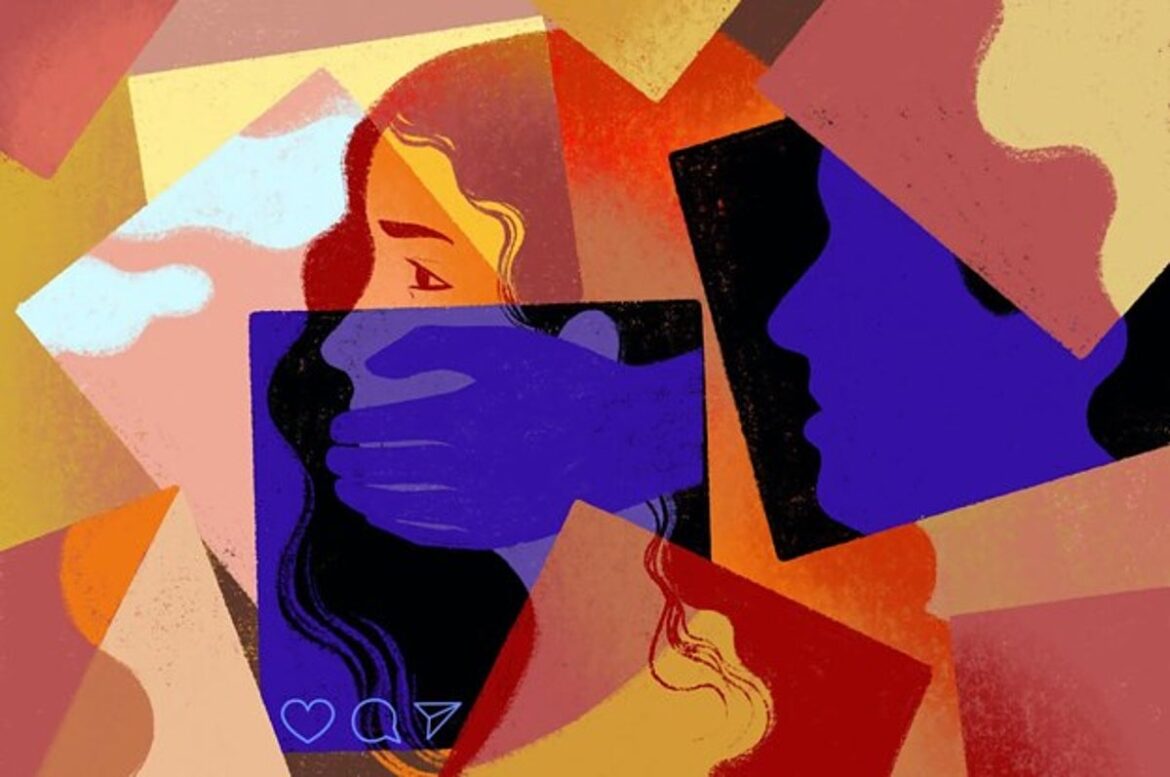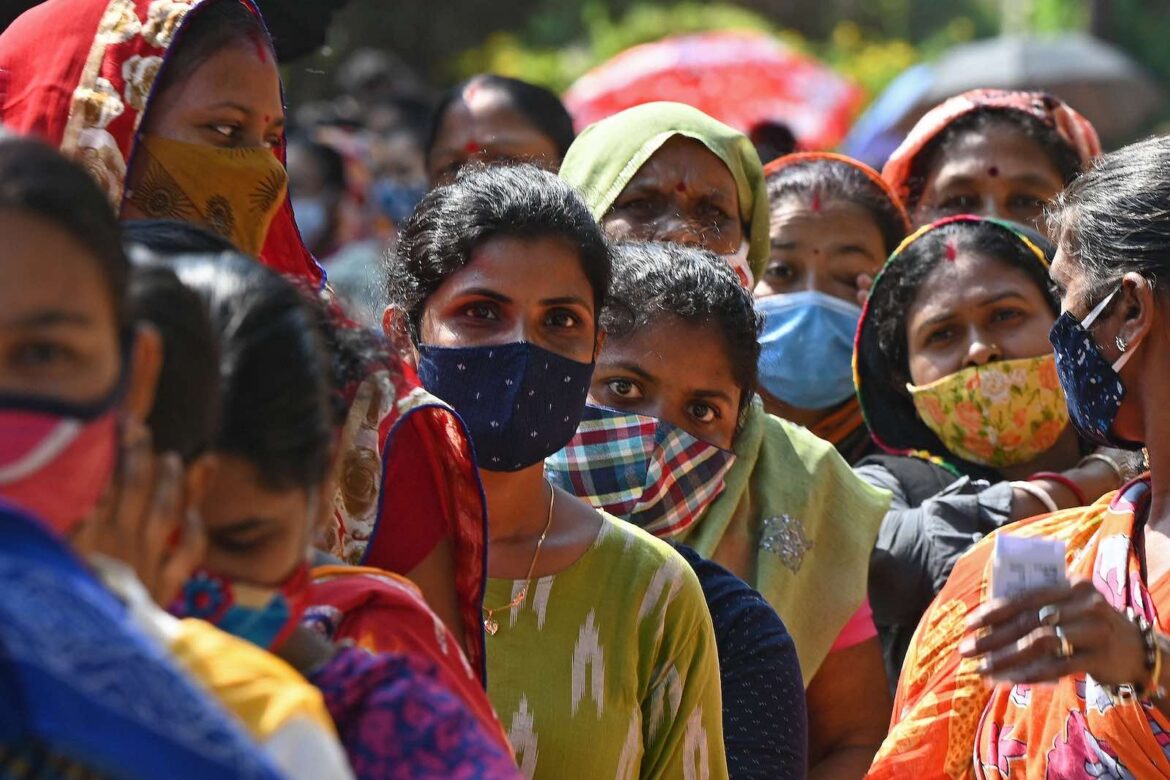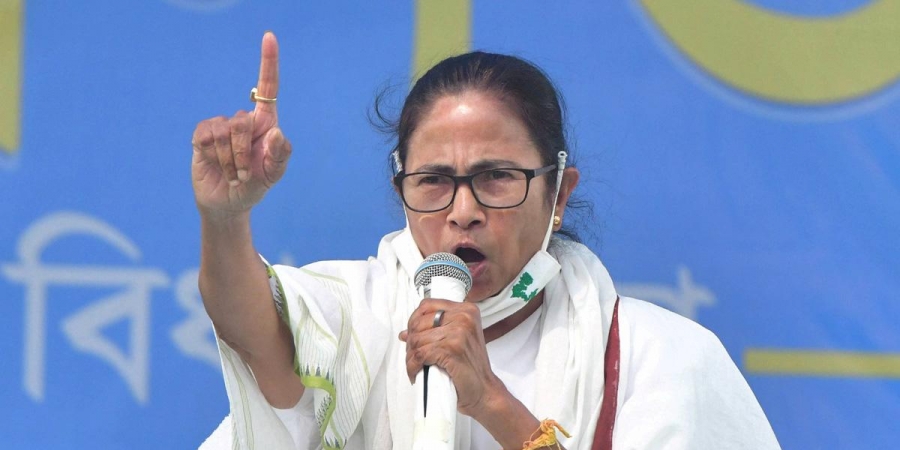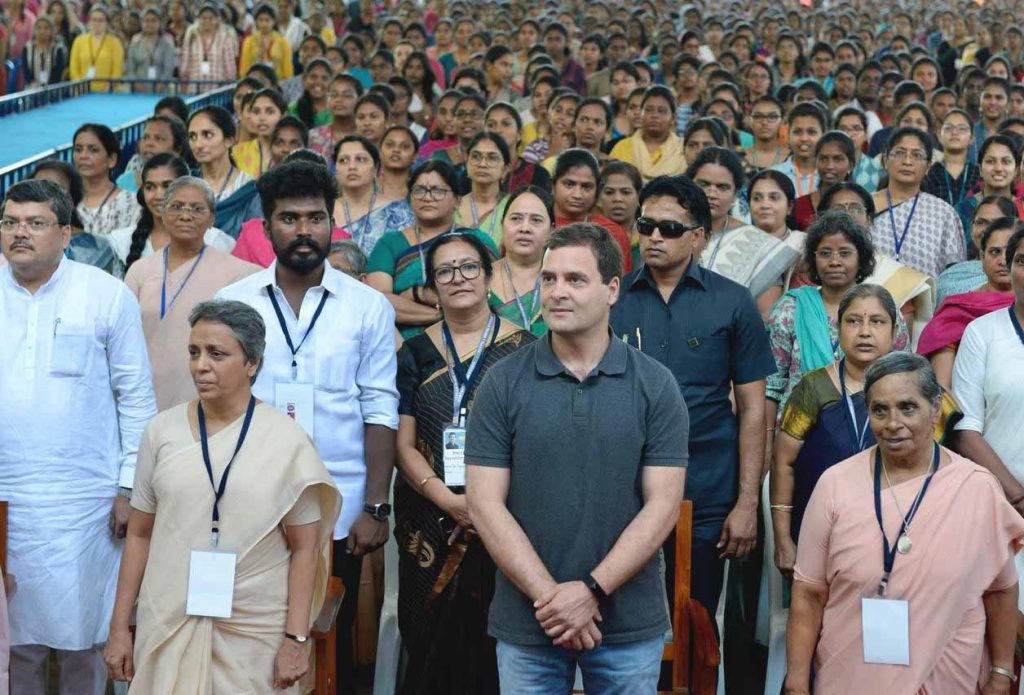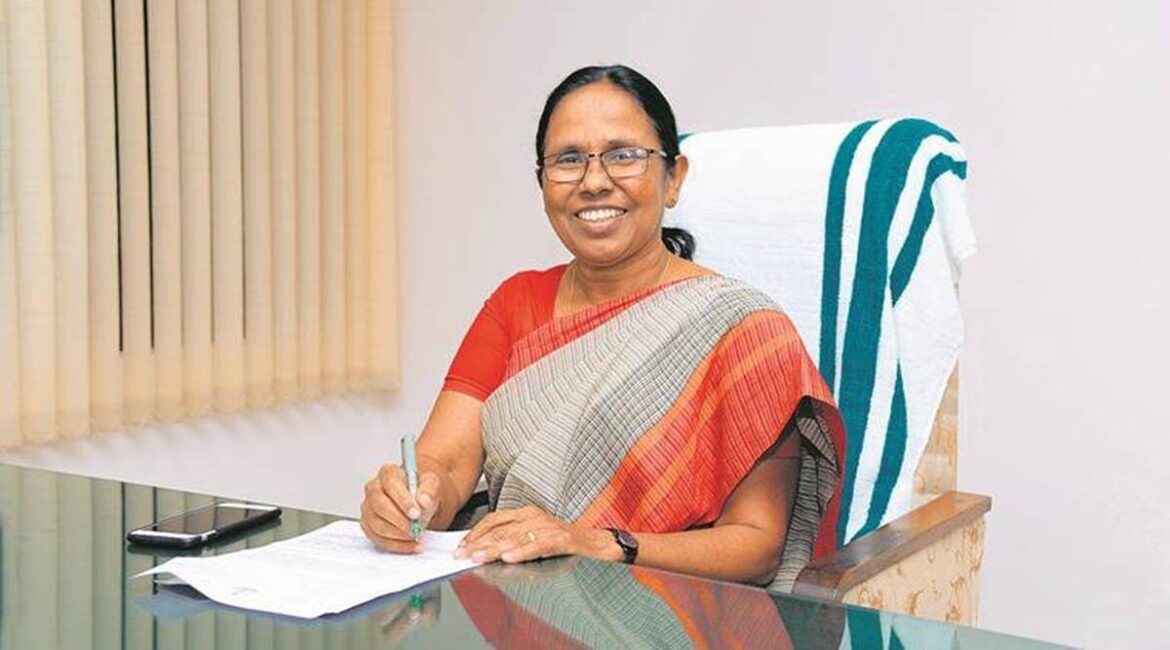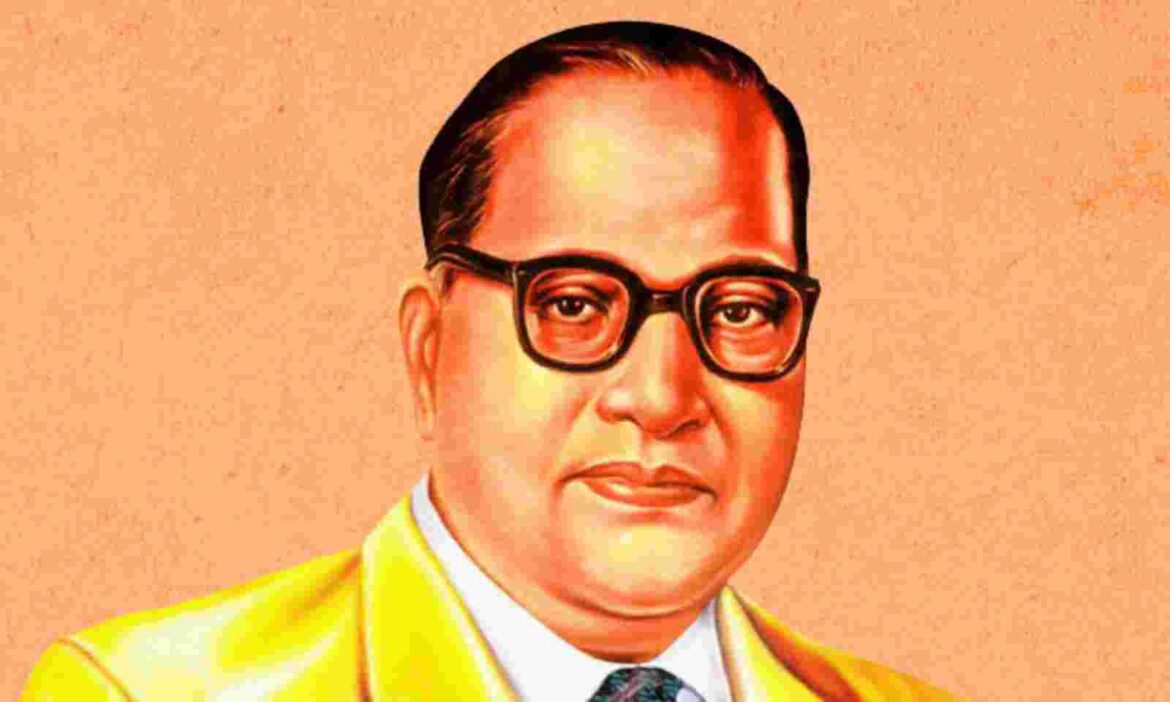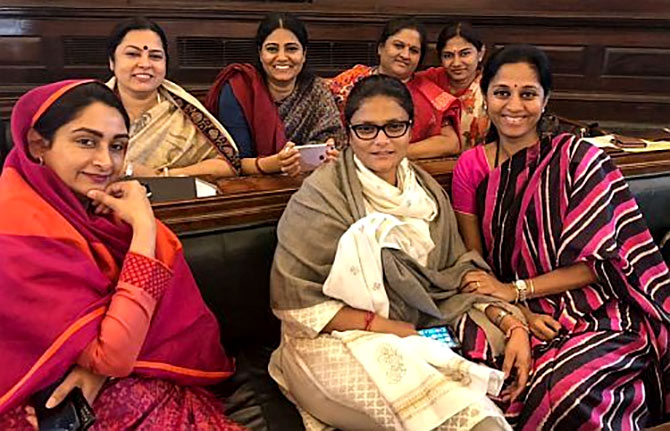Supporting Campaigners to win elections on Gender Issues.
Politics
Field Notes From Bharat Jodo Yatra
By Avani Bansal
This Article is written based on my observations while walking on foot for 118 days from Kanyakumari enroute to Kashmir. While I am part of Rahul Gandhi led ‘Bharat Jodo Yatra’, the views herein are solely my own.
Amidst the cacophony of loud sloganeering, emotive faces of all ages, sharing the same curious look and glimmer of hope – we have been wading through what seemed like two banks of a river formed by engimatic people, with warm eyes and warmer touch, all to behold Rahul Gandhi, and we would like to believe, the Bharat Yatris too (a term used for all those who have walked the entire stretch of ‘Bharat Jodo Yatra’ from Kanyakumari to Kashmir), from State after State – Tamil Nadu to Kerala, all the way to Punjab, where we are now – via Karnataka, Andhra Pradesh, Telangana, Maharashtra, Madhya Pradesh, Rajasthan, Delhi, Uttar Pradesh and Haryana. We started walking on 7th September, 2022 from the Southern most tip of India and have covered 3500 kms on foot thus far, with 15 more days to reach Srinagar.
While remembering faces amongst thousands of people who we met enroute, becomes difficult, it would always be my focus to look out for women and girls– smile and wave at them, occassionaly shake hands, and every now and then, be surprised by a warm sudden hug from a woman, melting me with emotions.
The reason I especially looked out for women, was partially selfish – which is to tell them (indirectly) and myself (in the process) that – ‘Hey, here I am! A woman walking from Kanyakumari, headed to Kashmir.’ That recognition in their eyes that women are doing this too, was both a self-affirmative thought and what I hope would be an inspiring one for them. I made it a point to wave at those women especially, who were standing atop their houses, or in balconies at the top floor of a five-six floor building or a couple of yards away, or meekly looking at us from her purdah, or behind a half-open door, for I needed them to know that I ‘see’ them.
As women, we very often suffer from the phenomenon of ‘invisibility’ – the feeling that perhaps I am not seen – something that the lead character in the latest movie ‘Qala’ (on Netflix) makes an interesting dialougue about. But why am I complaining? I am not the only Woman Bharat Yatri – we are atleast 33 of us (as per the original list of bharat yatris – although there have been some additions later on) and we got ample media coverage, so what ‘invisibility’ are we talking about?
Are all those women who came out to support us, invisible? What about those scores of girls and women who are seen sharing an emotional moment with Rahul Gandhi? Women holding flags and walking shoulder to shoulder for long distances; women holding flowers standing in long rows as an expression of their love; women dancing in their traditional attires on folk music in various states; women performing on stage on local cultural songs to welcome us; women from the tribal community putting on their massive headgears and beautiful dresses to welcome us; women standing out of their workplaces in groups to wave at us; working women, girl students, old women – weren’t they all there at the Yatra – to be seen by all of us?
Yes, except very rarely did I see women in decision making roles and spaces. Women were holding flags, but very few were on hoardings and banners. Women were dancing on the streets, but very few were in management roles mobilising people for the Yatra. Women were there on the streets waiting for us, running small chai shops, selling flowers, pausing from their cleaning work with their brooms still in their hands, but they weren’t running the kirana shops, or small and medium scale enterprises, scores of which we crossed on our way.
The beauty of living on roads, even if for a while, is that one gets to see a million stories in one frame of a second – as if everywhere you look, your eyes go ‘click’ and then in that picture you look for the unfolding of several characters.
We walked past and met several women working in the farms, on construction sites or at brick kilns. Women were seen selling peanuts, working on flower fields, in ponds, and most of these are low paying unorganised sector jobs. But very few women were seen running restaurants, or selling garments, or heading medicine shops to name a few.
I kept asking myself during the entire Yatra – “Where are all the women?”
Yes, there was a Shakti Amma, about 70 year old woman in Kerala, who had lost one of her chappal (slipper) due to the crowds in the Yatra, so she walked with one chappal, holding Mahila Congress flag for the entire day long. Yes, there was this mid-aged woman, who came running from her village, with a hand-made bouque of fresh flowers for Rahul Gandhi. Yes there was this group of Adivasi women, who didn’t speak our language and danced to completely unique music and dance steps – because someone told them that we were coming.
Women continue to be ‘invisible’ in all strata of society, including politics, because one expects them to do what is told – not to give them agency or decision making power. In Congress, there are honourable exceptions – of strong women who have made it on their own but their numbers are still far from ideal. While Congress is the only party to boast of having ushered in many progressive laws for women safety and women empowerment, the represenation of women – not just symbolic but effective representation of women by providing them with a real say in decision making, remains an uphill task. Ensuring 33 percent of reservation for women in Panchayati Raj system was a great start but we need to strive towards ensuring 33 percent reservation in Parliament. The decision of Priyanka Gandhi, to give tickets to women in Uttar Pradesh elections, was itself a very bold move. But beyond just political representation, the real stuggle for women in India is to emerge as a political force, such that no political party can do away with mere lip service to their cause.
In speaking to hundreds of women and having multiple conversations with them across states, one thing is clear. There are some low lying fruits – some easy steps that can be taken towards women empowerment, safety and representation, provided there is political will. Start a women’s cooperative revolution; start a parallel women’s police force ; ensure easy credit loans to women entrepreneurs and women heading small and medium scale enterprises ; provide major boost to skill training for women; start nation wide self defence training program for women ; pay attention on the status of foster care homes for women – to name a few. Some nation-wide programmes for women empowerment, which create a win-win situation, are the need of the hour.
For instance, take up something simple as ‘sewing’ – provide that training to women at all levels and create a potential garment industry revolution. Now it’s not as easy as it reads, but we need to think on these lines to economically empower women who don’t have education, or empolyment opportunties.
We have to move away from discussing women issues on specific days, or around specific events. We need to move away from patting ourselves at the back for a few heroic achievements of individual women, and focus on ushering in systemic change. We need to ask ourselves some tough questions, such as – why do women in India still have to bust their gall bladders by not being able to use clean toilets? Why do our girls still have to walk for kilometers to go to schools? Why are women almost absent from public spaces and men seem to use these spaces as if they are the sole users – be it on roads, grounds, parks etc.? Why are we still arguing about what women wear or who they choose to marry, without caring enough about their education and healthcare? And why have we failed to put forth a concrete road-map to make India safe for women?
While there are many people, individuals and organisations working towards women empowerment in different aspects, what makes politics an interesting way of bringing about ‘change’ is that with one right tweak in policy, we can affect the lives of millions of women. As one renowned healthcare expert, who was walking with us in the Yatra told me – “if the government adds atleast one lentil and some ghee in the ration system (along with rice), it can significantly decrease the iron deficiency in women. Also it can lead to people cooking ‘khichdi’ and that can be one full meal for families.”
Rahul Gandhi has shown an open heart and a path of love during this Yatra. It presents him as a kind leader, something of a rarity in Indian politics. What that will mean for women in India has to be seen.
For now, women will continue to walk as they forever have. The question is – will they ever arrive or will they forever be in a Yatra to realise their full rights and dignity, something that our Constitution makers promised them on Day 1.
First Published here:
https://m.thewire.in/article/politics/where-are-the-women-field-notes-from-the-bharat-jodo-yatra
In Conversation With Shamim Modi, Social Activist & Politician
Avani Bansal
In this extremely candid and honest conversation, hear about the journey of Ms. Shamim Modi, who was a city girl, but then got engaged passionately in the fight of the Adivasis and workers. From her experiences of working on building a grassroots movement to choosing to enter into electoral politics, Shamim shares very interesting and heart-touching anecdotes from her journey. She also shares how she met the love of her life and got married, the struggles and joy of parenting as an activist and a political person and how she never let her gender or religious identity be a roadblock in her work.
If you are looking at being inspired into a journey of ‘working for the people’ with integrity and passion, this is a must watch conversation, condensing years of wisdom in about an hour.
Author: Radhika Ghosh
On 1st August 2021, a 9-year-old Delhi girl was found to be allegedly raped, murdered and cremated without her family’s consent. The Delhi Police Crime Branch inspected the spot at the crematorium in Delhi Cantonment.
The incident gained national attention when hundreds of protestors were seen to have gathered and marched holding signs outside the Nangal cremation ground. They demand speedy justice for the minor and death penalty for the accused rapist.
The nine-year-old minor daughter of rag pickers hailing from southwest Delhi went to a crematorium near her house to fetch some drinking water for her father. She never returned. Around 6 pm, her mother was informed that a 55-year-old priest, Radhe Shyam wanted to talk to her. Upon going there, the mother found her daughter lying dead, allegedly all drenched, face paled, wounded all over, and her tongue blue and lips black.
Upon questioning, the priest informed the girl’s mother that the cause of her death was electrocution. When the grief-stricken mother wanted to see her body and inform the police regarding the death, the priest panicked and asked her not to involve the police. He said that the police would take her to the hospital for an autopsy where her organs would be sold off, and a legal case would go on for many years for which the family was not financially equipped. He rather offered money to stay silent on the matter and asked her to go away. The priest and his associates locked the gates of the crematorium thereafter and convincingly cremated the minor’s body despite her mother protesting. The helpless mother could only sight her daughter’s funeral pyre flames ablaze alone from a distance.
Infuriated neighbours and the girl’s father on reaching the spot later, witnessed the priest confess raping the 9-year-old after which the police took the accused to custody. The Delhi district police arrested the priest, Radhey Shyam (55), and three of his associates namely- Kuldeep (63), Laxmi Narain (48) and Saleem (49). Gang-rape, murder and sexual offences have been registered against the four accused men.
Activists, lawyers, politicians have been visiting their homes intending to console the parents and try hard to fast-track the hearing of the case.
Dalit groups have been facing such atrocities all over the country. Especially sexual offences against women and children. It is not uncommon to see them struggle for justice despite strict anti-rape laws in India. Speculating the recent heinous crimes on the Dalit class of the country, social equality and justice has many years to fight before it sees the light of day.
राजेश ओ.पी. सिंह
नब्बे के दशक में जब बहुजन समाज लोगों में इस बात की जागरूकता आई कि संख्या में तो वो ज्यादा है परन्तु सत्ता में उनकी भागीदारी नगण्य है, तब एक नारा “जिसकी जितनी संख्या भारी, उसकी उतनी हिस्सेदारी” लगना शुरू हुआ। ऐसे अनेकों नारों व संघर्षों से बहुजन समाज ने अपने लोगों को एकजुट करके सत्ता में अपनी भागीदारी सुनिश्चित करने के प्रयास शुरू किए और काफी हद तक कामयाब भी हुए। इस प्रकार के नारों और संघर्षों की ज़रूरत महिलाओं को भी है, क्यूंकि महिलाएं संख्या में तो पुरुषों के लगभग बराबर है परन्तु सत्ता में उनकी भागीदारी ना के बराबर है। भारत में महिलाओं की स्थिति में समय समय पर बदलाव होते रहे हैं, पिछले कुछ दशकों में उनकी सामाजिक स्थिति और अधिकारों में काफी बदलाव आए हैं परन्तु राजनीतिक प्रतिनिधित्व (सत्ता की भागीदारी) की स्थिति में कोई खास बदलाव देखने को नहीं मिला है। भारतीय राजनीति में आज भी आम आदमी की बात होती है, आम औरत के बारे में कोई बात नहीं करता, सभी राजनीतिक दलों के एजेंडे में महिलाओं के मुद्दे सबसे अंत में आते हैं।
“इंटर पार्लियामेंट्री यूनियन रिपोर्ट” जिसमे विश्व के निम्न सदनों में महिलाओं की संख्या के अनुसार रैंकिंग तय की जाती है, 2014 के आंकड़ों के अनुसार 193 देशों की सूची में भारत का 149 वां स्थान है, वहीं पड़ोसी देश पाकिस्तान और बांग्लादेश जिन्हें हर कोई महिला विरोधी मानता है, जहां पर शासन कभी लोकतंत्र तो कभी सैनिकतंत्र में बदलता रहता है, इन देशों ने क्रमशः 100 वां और 95 वां स्थान प्राप्त किया है।
भारत में पहली लोकसभा (1952) चुनाव में महिला सांसदों की संख्या 22 (4.4%) थी, वहीं 17वीं लोकसभा (2019) चुनावों में ये संख्या 78 (14.39%) तक पहुंची है, अर्थात महिला सांसदों की संख्या को 22 से 78 करने में हमें लगभग 70 वर्षों का लंबा सफर तय करना पड़ा है।
राज्य विधानसभाओं में भी महिला प्रतिनिधियों की स्थिति नाजुक ही है, जैसे हाल ही में संपन्न हुए पांच राज्यों के विधानसभा चुनावों में से यदि हम केरल, पश्चिम बंगाल और तमिलनाडु के चुनावी नतीजों का अध्ययन करें तो इनमे महिला विधायकों की संख्या केवल 9.51 फीसदी है। केरल राज्य, जहां बात चाहे स्वास्थ्य की करें या शिक्षा की करें, हर पक्ष में अग्रणी है, परंतु यहां कुल 140 विधानसभा सीटों में से केवल 11 महिलाएं ही जीत पाई हैं। वहीं तमिलनाडु जहां जयललिता, कनिमोझी जैसी बड़े कद की महिला नेताओं का प्रभाव है यहां 234 विधानसभा सीटों में से केवल 12 सीटें ही महिलाएं जीत पाई हैं। दूसरी तरफ पश्चिम बंगाल जहां महिला मुख्यमंत्री है वहां पर स्थिति थोड़ी सी ठीक है और 294 में से 40 महिलाओं ने जीत दर्ज की है। इसमें हम साफ तौर पर देख सकते है कि महिला पुरुषों की संख्या में भारी अंतर है।
संयुक्त राष्ट्र ने अपनी एक रिपोर्ट में कहा कि भारत जैसे देशों में जहां महिलाओं की सत्ता में भागीदारी बहुत कम है और यदि ये गति ऐसे ही चलती रही तो इस पुरुष – महिला के अंतर को खत्म करने में लगभग 50 वर्षों से अधिक समय लगेगा।
सक्रिय राजनीति में महिलाओं की दयनीय स्थिति के लिए केवल राजनीतिक पार्टियां जिम्मेदार नहीं है, बल्कि हमारा समाज भी जिम्मेदार है, जो महिलाओं का नेतृत्व स्वीकार नहीं करता। जितनी महिलाएं राजनीति में हैं उनमें से 90 फीसदी महिलाएं राजनीतिक परिवारों से सम्बन्ध रखती है और इन्हें भी मजबूरी में राजनीति में लाया गया है जैसे हम हरियाणा की प्रमुख महिला नेताओं – कुमारी शैलजा, रेणुका बिश्नोई, किरण चौधरी, नैना चौटाला, सावित्री जिंदल आदि, की बात करें तो पाएंगे कि ये सब अपने पिता, ससुर या पति की मृत्यु या उपलब्ध ना होने के बाद राजनीति में आई है, शैलजा जी ने अपने पिता के देहांत के बाद उनकी सीट पर उपचुनाव से राजनीति में प्रवेश किया, सावित्री जिंदल और किरण चौधरी अपने पति की मृत्यु के बाद उनकी जगह पर चुनाव लडा, रेणुका बिश्नोई अपने ससुर जी के देहांत के बाद राजनीति में आई, वहीं नैना चौटाला अपने पति के जेल में होने के बाद उनकी सीट से चुनाव लड़ कर राजनीति में आई। इस से स्पष्ट होता है कि महिलाएं चुनाव लड़ती नहीं बल्कि उन्हें मजबूरी में लड़वाया जाता है। चुनावों में महिलाओं को स्टार प्रचारक के तौर पर प्रयोग किया जाता है, महिलाओं के लिए अनेकों योजनाएं घोषित की जाती है परन्तु टिकट नहीं दिए जाते।
महिलाओं पर उनकी पहचान, उनके रंग रूप, उनके शरीर की बनावट से लेकर उनके कपड़ों तक पर टिका टिप्पणी होती है। जैसे शरद यादव ने राजस्थान की पूर्व मुख्यमंत्री वसुंधरा राजे के लिए कहा कि अब आप ज्यादा मोटी हो गई है, अब आपको आराम करना चाहिए, वहीं कुछ वर्ष पहले एक वामपंथी नेता ने ममता बनर्जी के लिए कहा कि ये लाल रंग से इतनी नफरत करती हैं कि अपने मांग में सिंदूर नहीं लगाती। अवसरवादिता और अति पुरुषवादी राजनीति, महिलाओं के प्रतिनिधित्व को बढ़ने नहीं दे रही।
वहीं सीएसडीएस ने अपने एक सर्वे में पाया कि महिलाओं की राजनीति में कम संख्या के पीछे अनेक कारण है जैसे 66 फीसदी महिलाएं इसलिए राजनीति में नहीं आती क्योंकि उनकी निर्णय लेने की शक्ति नहीं के बराबर है, वहीं 13 फीसदी महिलाएं घरेलू कारणों से, 7 फीसदी महिलाएं सांस्कृतिक कारणों से, और कुछ राजनीति में रुचि ना होना, शैक्षिक पिछड़ापन असुरक्षा का भय, पैसे की कमी आदि।
एक कारण और भी है कि महिलाएं ही महिला उम्मीदवार का समर्थन नहीं करती, जैसे कि हम देखें भारत में 73 लोकसभा सीटें ऐसी हैं जहां पर महिलाओं के वोटों की संख्या पुरुषों के मुकाबले ज्यादा है, परंतु इन 73 में से केवल 3 सीटों पर महिला सांसद चुन कर आई है, अर्थात जहां महिलाओं के वोट ज्यादा है वहां भी 96 फीसदी सीटें पुरुष उम्मीदवारों ने जीती हैं।
कई जगहों पर महिलाएं ही महिलाओं को विरोध करती नजर आती है जैसे श्रीमती सोनिया गांधी के लिए सुषमा स्वराज ने कहा था कि यदि सोनिया गांधी प्रधानमंत्री बनी तो मैं अपना मुंडन करवा लूंगी, भाजपा की एक अन्य नेता शायनी एन.सी. ने एक बार मायावती पर टिप्पणी करते हुए कहा कि मायावती महिला है भी या पुरुष। तो महिलाओं पर इस स्तर की घटिया टीका टिप्पणी न केवल पुरुष करते है बल्कि महिलाएं भी करती हैं।
सत्ता में महिलाओं की कम भागीदारी के लिए महिला नेता भी ज़िम्मेदार है, जैसे कि उतरप्रदेश, पश्चिम बंगाल, तमिलनाडु, राजस्थान आदि राज्यों में महिलाएं मुख्यमंत्री रहीं है या आज भी अपने पद पर बनी हुई हैं, परन्तु इन राज्यों में भी महिलाओं की सत्ता में भागीदारी नगण्य ही है, इसका एक कारण ये है कि महिला नेता भी महिलाओं के लिए कार्य नहीं करती, महिलाओं को राजनीति में जगह नहीं देती, यदि इन मजबूत महिला नेताओं ने महिलाओं के लिए राजनीति का प्रवेश द्वार खोला होता तो शायद आज ये और भी ज्यादा मजबूत नेता होती।
अब असल सवाल ये है कि सत्ता में महिलाओं की भागीदारी को कैसे बढ़ाया जाए? इसके लिए सबसे उपयुक्त समाधान आरक्षण को माना जाता है, और महिला आरक्षण के संबंध में भारतीय संसद में 1996 से कई बार बिल लाया गया परन्तु अभी तक पास नहीं हो पाया है I असल बात तो ये है कि राजनीतिक दलों की इच्छा ही नहीं है कि महिलाओं को सत्ता में भागीदारी दी जाए क्योंकि यदि वो असल में महिलाओं की सत्ता में भागीदारी चाहते तो सबसे पहले अपने पार्टी के संगठन में महिलाओं को उचित प्रतिनिधित्व देते और यदि महिलाओं को मुख्य संगठन में उचित प्रतिनिधित्व मिलता तो शायद उनके लिए अलग से महिला मोर्चा या महिला विंग बनाने कि जरुरत नहीं पड़ती I हम देखते है की इन महिला मोर्चा या विंग की पार्टी के निर्णयों में कोई भूमिका नहीं होती। ये मोर्चे या विंग अपने सदस्य महिलाओं को भी सत्ता में भागीदारी नहीं दिलवा पाते तो आम महिला को कैसे दिलवा पाएंगे।
वहीं एक सवाल ये भी है कि क्या आरक्षण देने से महिलाओं की भागीदारी सुनिश्चित की जा सकती है? क्यूंकि आरक्षण से सदनों में महिलाओं की संख्या तो बढ़ जाएगी ,परंतु क्या महिलाएं निर्णय ले पाएंगी, इस पर विचार करने की आवश्यकता है। जैसे यदि हम देखें कि पंचायतों में 1993 से महिलाओं के लिए सीटें आरक्षित की गई हैं, महिलाएं सरपंच या प्रधान तो बन जाती है परन्तु सारे निर्णय उनके घर के पुरुष ही लेते हैं। उनका केवल नाम होता है।
अंत में हम कह सकते हैं कि महिलाओं की सत्ता में भागीदारी तभी सुनिश्चित की जा सकती है जब उन्हें सभी दलों में उचित स्थान व पद मिले और साथ में निर्णय निर्माण की शक्ति मिले क्यूंकि बिना निर्णय निर्माण की शक्ति के महिलाएं चुनाव जीत कर भी कुछ नहीं कर पाएंगी। परंतु इस सब के बावजूद खुशी की बात ये है कि अब महिलाओं ने मतदान के लिए घरों से बाहर निकलना शुरू किया है, 1952 पहली लोकसभा में पुरुषों व महिलाओं के मतदान में 17 फीसदी का अंतर था, वहीं 2019 के सत्रहवीं लोकसभा में पुरुष महिला का ये अंतर घट कर 0.4 फीसदी रह गया है।
राजेश ओ. पी. सिंह
कोरोना की दूसरी खतरनाक लहर में संपन्न हुए पश्चिम बंगाल विधानसभा चुनावों में ममता बनर्जी की तृणमूल कांग्रेस ने बाजी मार ली है और 2011 के बाद से लगातार तीसरी बार प्रदेश में सत्ता पर काबिज होने में सफल हुई है। हालांकि तृणमूल कांग्रेस ने 2019 लोकसभा चुनावों में भारी हार का सामना किया था , तब से ( मई,2019) लेकर मई,2021 तक ममता बनर्जी और उनके चुनावी सलाहकार प्रशांत किशोर ने जबरदस्त और कुशल मेहनत करते हुए मतदाता को भरोसा दिलाया कि ममता ही बंगाल के मुख्यमंत्री पद के लिए सर्वश्रेष्ठ विकल्प है और इसी भरोसे के सहारे वो इस चुनाव में जबरदस्त वापसी करने में सफल हुए ।
पश्चिम बंगाल में 1977 से 2011 तक लगातार 34 वर्षो तक लेफ्ट ने शासन किया, 2011 में जब तृणमूल कांग्रेस ने पहली बार विधानसभा चुनाव जीता और सत्ता पर काबिज हुई तो इस जीत की भूमिका कई वर्षों पूर्व में बनना शुरू हुई थी, सर्वप्रथम वर्ष 2008 में पश्चिम बंगाल में संपन्न हुए पंचायत चुनावों में तृणमूल कांग्रेस ने जीत दर्ज की, उसके बाद 2009 में हुए लोकसभा चुनावों में भी तृणमूल कांग्रेस ने लेफ्ट को भारी पराजय का सामना करवाया और अंततः 2011 विधानसभा चुनावों में लेफ्ट को सत्ता से बाहर कर दिया, और बिल्कुल इसी पैटर्न पर भाजपा चल रही थी 2008 व 2009 की तरह 2018 के पंचायत व 2019 के लोकसभा चुनावों में भारी जीत हासिल करने में कामयाब रही थी और इसी आधार पर कुछ राजनीतिक व चुनावी विश्लेषकों का मानना था कि बंगाल 2011 के इतिहास को दोहराएगा और भाजपा तृणमूल कांग्रेस को सत्ता से बाहर कर पाने में सफल हो पाएगी, परन्तु ममता की कड़ी मेहनत ने इसे होने नहीं दिया, भाजपा व अन्य चुनावी राजनीतिक विश्लेषकों को जिन्हें लगता था कि पंचायत और लोकसभा चुनाव जीतने के बाद भाजपा विधानसभा चुनाव भी जीतने में सफल हो पाएगी, वो सब ग़लत साबित हुए हैं।
ममता बनर्जी की जीत में उनके चुनावी सलाहकार प्रशांत किशोर की सबसे अहम भूमिका रही है, उन्होंने न केवल ममता को चुनाव जीतने में सहयोग किया है बल्कि चुनाव से पांच महीने पहले कही बात कि भाजपा दो डिजिट पार नहीं करेगी , को भी सच साबित किया है, यहां प्रशांत के लिए दोहरी चुनौती थी, परन्तु वो इस चुनौती को भेद पाने में कामयाब रहे है। प्रशांत किशोर के अलावा भी कुछ महत्वपूर्ण बिंदु ऐसे है जिन्होंने ममता के चुनाव जीतने में अहम भूमिका निभाई है , उनका जिक्र इस प्रकार है –
मजबूत नेतृत्व और साफ छवि – ममता हमेशा से जुझारू व मजबूत नेता रही है, इस चुनाव में भी उन्होंने व्हील चेयर पर होने के बावजूद सक्रिय भूमिका निभाई और हर जगह संघर्ष करते हुए नजर आई। इसके आलावा उनकी साफ छवि ने भी मतदाताओं को उनकी तरफ आकर्षित किया है, क्योंकि ममता सरकार में भ्रष्टाचार के सारे आरोप उनके मंत्रियों या विधायको के सिर पर रहें है और ऐसे लगभग सभी खराब और नकारत्मक छवि वाले लोगों को या तो पार्टी से बाहर का रास्ता दिखा दिया या फिर वो खुद पार्टी छोड़ कर चले गए । उनके जाने के बाद तृणमूल कांग्रेस एक बार फिर साफ सुथरी हो गई और ममता की साफ छवि का आकर्षण मतदाताओं को अपनी तरफ खींच पाने में सफल हुआ।
महिला नेतृत्व होने की वजह से महिलाओं के वोट को तृणमूल कांग्रेस अपनी तरफ कर पाने में सफल रही है, क्यूंकि दूसरी विरोधी पार्टी के पास महिला नेतृत्व का अभाव था ।
सरकारी योजनाओं की आम जन तक पहुंच – लोकसभा चुनावों के तुरंत बाद से लेकर पिछले दो वर्षो में ममता सरकार ने लगातार अनेक कार्यक्रम चलाए जिनसे सरकारी योजनाओं की आम जन तक पहुंच को सुनिश्चित किया जा सका, इनमें सबसे प्रमुख था ” ममता के बोलो ” इसमें एक फोन नंबर दिया गया और कोई भी व्यक्ति अपनी बात सीधा ममता को बता सकता था और हर व्यक्ति की बात को ममता की टीम द्वारा सुना गया और आम जन की हर समस्या को दूर करने का पूर्ण प्रयास किया, इसका मतदाताओं पर बहुत साकारात्मक प्रभाव पड़ा ।
बाहरी व अंदरूनी का प्रभाव – ममता ने इसको मुद्दा बनाया और बंगाली लोगों को ये समझा पाने में कामयाब रही कि मैं आपकी आपनी हूं और भाजपा वाले बाहरी है, इसलिए आप अपनों के लिए मतदान करें ना की बाहरी के लिए। इस सिलसिले में ममता की पार्टी ने कई नारे जैसे बंगाल की बेटी, बंगाल का सम्मान , बंगाली बनाम गैर बंगाली आदि, जिनका ममता बनर्जी को पूरा फायदा मिला है।
सोशल इंजीनियरिंग – तृणमूल कांग्रेस लोकसभा चुनावों में जिन क्षेत्रों में हारी थी, बात चाहे जंगल महल क्षेत्र की करें या कूचबिहार की, वहां पर अनुसूचित जाति और अनुसूचित जनजाति के मतदाता ज्यादा संख्या में हैं । इसलिए विधानसभा चुनावों में ममता ने इन जातियों का खास ख्याल रखा, इसका अंदाजा इस बात से लगाया जा सकता है कि बंगाल में 68 सीटें अनुसूचित जाति के लिए आरक्षित है परन्तु तृणमूल कांग्रेस ने 79 सीटों पर अनुसूचित जाति के लोगों को चुनाव लड़वाया ,वहीं अनुसूचित जनजाति की 16 सीटें आरक्षित है परन्तु तृणमूल कांग्रेस की तरफ से 17 सीटों पर अनुसूचित जनजाति के लोग चुनाव लड़ रहे हैं।दूसरा उत्तरी बंगाल में ( कूचबिहार, दार्जलिंग आदि क्षेत्र) एक महत्वपूर्ण अनुसूचित जाति है ‘ राजवंशी ‘ उन्हें ये आश्वाशन दिया गया कि तृणमूल कांग्रेस की सरकार बनने पर उनके मुख्य देवता के जन्मदिन पर प्रदेश में सरकारी अवकाश घोषित किया जाएगा,उनकी भाषा को सरकारी स्कूलों में पढ़ाया जाएगा, उनकी जाति के नाम से एक नई पुलिस फोर्स बनाई जाएगी ,आदि आश्वासनों ने भी इस समुदाय जो की लोकसभा चुनावों में भाजपा के पक्ष में गया था को वापिस तृणमूल कांग्रेस की तरफ लाने में महत्वपूर्ण भूमिका निभाई है। ममता ने अनुसूचित जातियों को फिर से विश्वास दिलवाया की वो ही उनकी सच्ची हितेषी है और अपने पक्ष में मतदान करवाने में सफल हो पाई।
तृणमूल कांग्रेस ध्रुवीकरण की राजनीति से दूर रही और पूरे चुनावों के दौरान उसने समग्र मतदाताओं पर ध्यान दिया, ममता ने हिन्दू – मुस्लिम, छोटे लोग – भद्र लोग , शहरी – ग्रामीण आदि कोई अंतर नहीं किया और सभी वर्गों पर पूरा ध्यान दिया जिसका फायदा ममता की पार्टी को मिला, क्यूंकि इस से हर समुदाय का कुछ ना कुछ वोट ममता के पक्ष में आया, वहीं दूसरी तरफ भाजपा मुस्लिम जो कि प्रदेश में 30 प्रतिशत के आसपास है को पार्टी से अलग थलग रखा, और केवल 70 प्रतिशत मतदाताओं के सहारे चुनाव लड़ रही थी वहीं दूसरी तरफ तृणमूल कांग्रेस का ध्यान पूरे 100 प्रतिशत मतदाताओं पर था, और इसी का नतीजा है कि तृणमूल कांग्रेस लगातार तीसरी बार प्रदेश में सरकार बनाने में सफल हो पाई है।
भाजपा बनाम भाजपा का फायदा भी ममता को मिला है, क्यूंकि भाजपा ने तृणमूल कांग्रेस छोड़ कर गए लोगों को पार्टी में अहम स्थान दिए और उन्हे चुनाव भी लड़वाए, इस से भाजपा का पुराना मतदाता नाराज़ हुआ क्यूंकि उस क्षेत्र में उनकी लड़ाई उसी व्यक्ति से थी परन्तु अब वो व्यक्ति भाजपा का उम्मीदवार हो गया था , जैसे बहुत से स्थानों पर मतदाताओं ने साफ साफ बोला कि वो तृणमूल कांग्रेस के इसी नेता के खिलाफ थे उनकी लड़ाई इसी के खिलाफ थी परन्तु अब वो भाजपा में आ गया है तो हम कैसे उसे वोट दे, हमारी लड़ाई आज भी उसी के खिलाफ है, इस प्रकार ऐसे लोगों ने भाजपा से नाराज होकर ममता के पक्ष में मतदान किया है।
और भी अन्य कई कारण है जिनकी सहायता से ममता चुनाव जीतने में सफल हो पाईं है इनमें सबसे महत्वपूर्ण है उनका साधारण व्यक्तित्व, उनकी कड़ी मेहनत करने की लालसा आदि।
India heard Rahul Gandhi say “If somebody is harassing you, if somebody is not giving you what is your due, you have to face them and challenge them” at the Bharathidasan college for women in Puducherry. India watched him teach some moves of Aikido, a form of martial art to the students of St. Teresa College for Women in Kerala after asserting ‘women are much more powerful than men are but they fail to understand their power.’ India feels 33 percent reservation in government jobs for women and the passage of Women’s Reservation Bill securing 33 percent seats in Parliament is possible only with Rahul at the helm. True to the quote “When thou doest alms, let not thy left hand know what thy right hand doeth: that thine alms may be in secret…” Rahul attempted an actual action to assuage the fears and misery of Nirbhaya’s family. When parties and leaders won’t miss an opportunity to paste their photos or symbols on stuff they donate, thereby flaunting their philanthropy, there existed a leader with class who pleaded with the recipients of his goodwill that his act remains a secret. Congress aligning with DMK is a good sign or omen especially for women because it’s a party molded by Muthuvel Karunanidhi, both a product and a creator of the Dravidian movement who ensured his progressive social policies made way towards significant social development in TN. For instance women’s welfare measures such as the Anjugam Ammaiyar Inter-caste Marriage Assistance Scheme, Dr. Dharmambal Ammaiyar Memorial Widow Remarriage Scheme, Moovalur Ramamirtham Marriage Assistance scheme, EVR Nagammaiyar Memorial Free Graduate Education for Girls Scheme and the Dr. Muthulakshmi Reddy Memorial Maternity Assistance Scheme were were initiated and implemented successfully.
Tamilnadu is buzzing ever since Rahul Gandhi set foot here because he represents a hopeful future for ‘Bharat Mata’ as a whole. Whatever he did with whoever, he looked more than endearing with gestures that revealed who he is and what he will be. He could blend effortlessly and his desire to make society more fair and equitable, with economic possibilities for all, was visible in his conversations and programs.
In terms of leadership style, Rahul has introduced “charisma” into the political equation. He has a strong rapport with the public and he understands how to use the media to shape public opinion. More so, elections look like they are based more on the individual than the political party. No doubt Rahul has inherited his father’s charm. When people voted the Congress to victory in 1984, they were generally casting their vote for Rajiv Gandhi the man instead of for him as the standard-bearer of the Party. The most popular Prime Minister up to his time, Rajiv used his enthusiasm to shape issues, and to mold opinions too.
Educational institutions welcomed him with ease. Rahul interacted ever-so-casually with students just to kind of hear from them, find out what they’re interested in, because he believes that most of the problems that we have are going to be solved by young minds. In his every move he was setting an example and to his critics he certainly looked like an important symbol of progress. It wasn’t an abstraction as Rahul witnessed the students in action, some impatient with events/things not in their control, few angry over losses and many sad about the existing structural inequities He recognized a part of him in them and he took it on him to help them understand a little bit more about how government works and explained how difficult it is to move this society forward without the right leadership.
At Xavier’s college, Tirunelveli the congress president made it clear that the real significance of what we do and achieve on the educational front must be reflected, not in statistics, but in the experiences of individual Indians, young and old, whose lives are supposed to be shaped by new educational programs and policies which should be formulated in tune with the needs and demands. Yet for the progress if any, we still face enormous problems in education: stubborn, lingering, unyielding problems because the policies are drafted by those who aim to use education as a “means for ideological indoctrination”. Interactive sessions highlighted Rahul’s skills as a good listener. Patiently did he listen and with all due honesty he clarified doubts and instilled hope. Definitely, connections that tie the government and the governed are primarily widespread public pessimism about the ability of the ruling government, at pretty much every level was heard and seen. Rahul’s extempores and the manner in which he responded to the ‘Educators Meet’ stood in vivid contrast to Modi’s constant uptalk as he reads from a teleprompter, staccato clauses and Twitter outbursts. The soul of his sentences – the resonance and depth took people back to the good old days of Kingmaker Kamarajar when he said education is not a financial commodity and hence should be available to everyone. He reiterated that noble professions like farming, education and healthcare being turned into financial commodities for the benefit of a handful of cronies has led to drastic changes in how our society perceives the role of food,knowledge and health in human life. A true leader like Rahul knows and understands that a country’s identity is the fusing of millions of disparate stories into a singular vision- a welfare society. Gujarat burns again and it’s never a model state.
In Mulagumodu, the hamlet of the Bruges lace Rahul was modish, making friends with students, weaving an intricate lace with love, dance, Aikido, push-ups and promises. Compelling and inspiring were Rahul’s mannerisms. Intimidated by this man’s camaraderie, the miserable Tamil Nadu unit of the Bharatiya Janata Party on Thursday wrote to the Election Commission to restrain Congress MP Rahul Gandhi from campaigning in vain. Thus, a genuine reply to a student who was concerned about the lack of freedom of expression in today’s India looked like a threat to national security but not the disappearance of rafale files or student groups like ABVP that inflict violence on students and practice goondaism by people in the disguise of leaders.
‘Big moment’ with the Chefs of the Village Cooking Channel (VCC) was the acme of RaGa’s visit. Whether it’s the way he transformed into one of them to become a hands on cook or the way he pronounced the ingredients in tamil or the manner in which he made them feel that he had a connection with them listening to their dreams and helping them grow wings by offering to introduce his friend Sam Pitroda or showing his humorous side, RaGa did it in style with no pretence whatsoever. As opposed to the PM who tried to woo the tamilians by trying his best in vain to utter a few couplets that did nothing but give enough content for memes and jokes in Tamilnadu, Rahul brought back Tamilnadu’s spirit and it’s sense of optimism. Any vision is worth little if a leader doesn’t have the character–the wisdom and heart to see through people’s eyes, hear between words and beyond what was spoken. Just a Few hours with the village chefs and their voices played into Rahul’s deep sense of Tamilnadu’s history and his belief in the promise of democracy. Seated beside them as they relished the mushroom biryani, Rahul discussed big ideas. We aren’t in an age where no popular leader can any longer mingle with his fellow citizens, either to stir them or learn from them. Remember the ‘Big Drama’ enacted by A Shah who visited a Dalit family in Peretapalli in Nalgonda district in 2017 with a troop of media persons? According to reliable sources Shah’s food was prepared in the mango orchard of an upper caste landlord in a neighbouring village. Another similar wily act of Shah at West Bengal’s Bankura in 2020 during his visit to a tribal family’s house was disclosed by Chief Minister Mamata Banerjee. These days, any such gestures by the BJP are more likely to be staged than genuine. For the BJP-AIADMK alliance in Tamilnadu, this election has been a combination of ‘ache din aane wale hai’ promises or DMK pummelling and new Rahul Gandhi bashing. Many a time, they were confused as to which approach should take primacy. With Rahul’s courage and integrity that I think is the hardest and most demanding kind, I believe that neither line would work to optimum efficacy.
In every educational institution he visited, Rahul made sure that he infused a confidence in students that they are as qualified as anybody to talk about what is right and just, and trust themselves in that. Without fear, he felt free to describe what he truly thought about a whole range of issues and that’s Rahul for TN. What’s more adorable was that, amidst withering criticism from the BJP, Rahul remained calm and composed even as he discussed different points of power, levers and fasteners throughout our society that help determine one’s direction- towards real democracy.
After watching Jallikattu in Madurai, RaGa assured the people of being one with them when it comes to protecting the culture and language of Tamilnadu. Shaking hands, acknowledging smiles and gestures, that was part of how he managed to maintain perspective and take his work seriously, or running for victory seriously, but not take himself too seriously. Rahul Gandhi had a valid point on the sport and he made it only after watching it in person. Yes, Congress leader Jairam Ramesh was Environment minister in 2011 when the Ministry issued a notification banning the use of bulls as performing animals and that will never downplay Rahul’s display of support to farmers. Just so the BJP believes and asserts that the party Supremo can’t be held totally responsible for a minister’s decision or tweet, it would be wise on their part to think at least once before accusing others of double standards. Having discovered its oxygen supply is shut down by voters of TN, BJP seems to be on a desperate search for relevance. It’s attempt to pooh pooh Rahul Gandhi’s charisma should be perceived in this light. There cannot be a better example of duplicity than AIADMK’s claim that their alliance with BJP is only “electoral”. Mr. Chief Minister you can’t sail safe and untroubled with a partner who has a different ideology or destination in mind.
At the gathering of Micro Small and Medium Enterprises (MSME) representatives in Coimbatore, RaGa’s solidarity was unmistakable. People await a restructured/ reconceptualised Goods and Services Tax (GST) and ‘one tax, minimum tax’. From Skill India, Digital India, Make in India, Atmanirbhar [Bharat], entrepreneurs ended up nowhere which means out of 7.5 crore small entrepreneurs, almost 30% of enterprises are dead. After ruling for 7 years in succession, the BJP is expecting the voters to swallow two things: One, economic reforms and two, it’s image of being pluralistic. Tamilnadu rejects both. Accusing the present ruling party of superimposing the GST, RaGa made it clear BJP’s GST is designed to help large businesses. It’s not a secret that the affluent have creamed off reforms that the Modi government has implemented so far. Therefore Mr. Prime Minister, what kind of economic reforms and for whom?
Cameras have a way of capturing what a thousand words cannot. TN has seen and heard Rahul like never before. As far as the people of TN are concerned, Rahul is the much needed fillip to our ailing democracy. Unlike BJP-AIADMK leaders whose proclamations underline that they are not willing to be active participants in any questioning of the principles underlying farm laws, poverty, corruption, alcohol prohibition or human rights and possible impact upon a highly unhealthy and unequal society, Rahul is willing to rectify failures/ shortcomings and reform government-a long overdue task. Above all, Rahul admits all pogroms and riots are wrong and he never hesitates to apologize unconditionally if need be.
Rape, harassment and other forms of violence against women appear to have risen in India and more so blatantly after the ruling government and it’s allies make every effort at moral policing. The audacity of blaming victims stems from the fact that BJP considers Manusmriti as a source of law for women issues. DMK that rests on the dravidian ideology that educating and uplifting women will bring social balance and growth will undoubtedly fare better with Congress by its side. ‘Bharat Mata’ as an appellation will be justified if women of all states rise and shine. May the sun rise from the beautiful south and throw some light on other parts of India as well.
Eventually, a vigorous and vigilant government is the sine qua non of a healthy democracy. And I guess Tamilians know it better.
Dear Rahul, as you know women’s welfare and safety is a concern and much more work remains. Women are capable of creating history and a promising future with formidable grace, for sure. But ‘don’t let anyone stop you’.
KK Shailaja: Kerala Health Minister’s Commendable Fight Against Coronavirus
Saba Rajkotia
As the number of confirmed Coronavirus cases in India continue rising, Kerala, which had some early success in dealing with COVID cases, saw a steep rise in COVID cases with more and more people flying in the State. Kerala’s mortality rate still remains one of the lowest as the state has now tweaked its strategy to deal with COVID cases.
It’s important to note the role of Kerala’s Health and Social Welfare Minister, Ms. KK Shailaja, in efficiently dealing with the COVID challenge.
Since the first case of Coronavirus was reported in Wuhan, China, Shailaja has been keeping a close eye on the development and spread of the virus. Taking into consideration the fact that many students from Kerala travel regularly to Wuhan for their studies, the Minister ensured that the State was well-equipped to deal with the arrival of the virus. Quarantine facilities were prepared and medical aid and equipment was made readily available. Furthermore, the Minister ensured that decisions were made according to scientific reasoning, and with the advice of subject experts.
Over a month before Modi declared a nation-wide shutdown across India in response to the threat of Coronavirus, Kerala had already declared a State-wide Emergency – in the first week of February. Shailaja recognised the gravity of the situation, and ensured that the State took the threat seriously. All public events were cancelled, movie theatres and schools were shut down and more doctors were sought out and appointed. Now, as the whole country struggles to deal with the effects of the lockdown, Shailaja is ensuring school children don’t miss out on their afternoon meals by serving them in their homes.
Shailaja has been open about her lack of trained medical knowledge, and she makes a conscious effort to ensure her people are well informed about the progression of the virus through her social media account (@shailajateacher) and daily conversations with the press. Since coming into power in 2016, Shailaja has faced multiple tragedies alongside the people of Kerala. In 2018, Kerala dealt with the outbreak of the Nipah Virus, followed by devastating floods in both 2018 and 2019. In the face of all this adversity, Shailaja stood out as a capable, compassionate and effective leader who was able to lead her State out of crisis.
In the aftermath of the floods, Shailaja did her best to ensure easy access to food and medication for the underprivileged sections of society. In order to avoid the onset of water-borne diseases, the Minister brought in homeopathic and ayurvedic doctors and through her meticulous planning she successfully avoided further disasters for the people of Kerala.
Shailaja’s commendable track record in resolving public health issues and compassionate approach to crisis management make her a reliable leader for the people in Kerala. In these scary and uncertain times, Shailaja inspires confidence.
Dr. B. R. Ambedkar’s Political Legacy : Harbinger Of Social Justice
Crimes by humans against humans have become so mundane because a dishonourable idea had managed to survive throughout millennia. The idea has metastasized and exists among Hindus, Muslims, Buddhists, Sikhs and Christians- more is the shame and the pity! That is, some people are inferior or even untouchable because of their low birth. This primitive idea plagues our country because we have failed to abolish it by law.
Largest democracy in the world, probably one of the busiest judiciaries with million pending cases and a constitution shaped by some of India’s finest minds and drafted by a committee headed by B.R. Ambedkar – India finds it hard to form a cohesive national identity. Hailed as the best in the world and 30 times longer than America’s and still growing, only the intellectually honest can agree on the fact that the country’s progress is being held back because there is no unanimity of understanding on the set of rules. Ransacking the known constitutions is not difficult but taking valuable lessons is. After 73 years of Independence a vice known as discrimination, outlawed for over six decades, is resilient and exist in new and insidious forms.
Slavery abolition didn’t happen only because there existed a constitution. It became a reality because of political will power. For 18 years William Wilberforce introduced anti-slavery motions in parliament to realize his dream. ‘Honest Abe’ made sure his country became “The land of the free” in the real sense through the 13th Amendment to the U.S. Constitution, ratified in 1865. .
Abolition of Apartheid, a brutal and restrictive racial regime in South Africa took more than lives of revolutionaries, their all. Few anti-apartheid activists including teenagers succumbed to cruel and prolonged police torture and few were jailed and assassinated. Stories of heroes who were assaulted, blindfolded and given electric shocks for more than 2 months in detention gives us the creeps even today. While the apartheid state continued their cases against the defenseless and state-violence continued, the hero Nelson Mandela fought 40 long years. 27 years of imprisonment did not deter him from his long walk to freedom until he drew up a new non-racial and democratic Constitution for South Africa. Procedure for amendment of the Constitution and election of members of Rajya Sabha of the Indian constitution were borrowed from the South African constitution. Since 1996, the South African Constitution has been amended by seventeen amendment acts and it is widely regarded as the most progressive Constitution in the world, with a Bill of Rights second to none. Of all the 104 amendments of the Constitution of India since it was first enacted in 1950, how many exist to guarantee equality and freedom to all citizens irrespective of their lineage? Rise of leaders like Chandrashekar Azad, Kanhaiya Kumar, Jignesh Mevani and Hardik Patel is seen as an aggression- persecuting them into the bargain.
Not a year has passed ever since a 21 year old Jitendra was beaten up by a few beings and killed in “Devbhoomi”. The reason being nothing but Jitendra preferred to sit on a chair and have a meal like hundreds of others who attended the wedding. How ridiculous is this! More pitiable is the fact that not one among the hundreds were willing to testify what the crime was. Still, the incident was registered under the Scheduled Castes and Tribes (Prevention of Atrocities) Act.
The hate towards fellow humans who are branded different on the basis of an inhuman varna is so strong. Stories of humans being threatened, beaten up, lynched and killed on the basis of dharma-shastras are more than sufficient for the world to condemn and scoff at us. Forget the ‘Land of Gods’, in the ‘Land of Mahatma’ stones were hurled at a wedding procession by people who believe they are entitled to do anything while at Khambhisar village in Modasa taluka because the groom rode a horse.
Despite the presence of police and their attempts to control the stone pelters, the victims had to run and hide. If Gandhiji is relevant today, why does Gujarat tops the list of states where certain people are subjected to systemic violence? Atrocities against the tormented and neglected lot in Gujarat have been rising steadily in the last two decades with the state witnessing a 72 percent increase in the number of registered cases between 2003 and 2018. Disturbing silences of those who are supposed to speak and act bother the citizens a lot. A proactive role expected of the police leads to disappointments. Citizens are provoked. Is the epithet “The jewel of the west” unfairly awarded to Gujarat? A notable percent of India’s willful defaulters belonging to Gujarat provokes us to rethink if the state deserves the epithet. Better a flaw in a Jewel than no Jewel at all, isn’t it?
Bhim Jayanti is a day to reckon with. 129 years after his birth, Dr. BR Ambedkar’s tenets are still very relevant because India is home to 28% of world’s poor, the wealth of a handful is equal to the wealth of almost 600 million people, 30 million are trapped in quasi-slave labour paying off the ‘debts’ of their ancestors, 220 million are excluded from the mainstream society, 65% of health workers refuse to visit certain settlements thereby denying basic care to some of India’s most vulnerable people, cruel, inhuman, and degrading treatment of over 165 million people in India is justified on the basis of their descent and above all the death of leaders who challenge the mindset of those who seek to maintain the status quo is very disturbing.
Inspite of the available legal tools and affirmative action policies in India, police systematically fail to properly register these crimes under the Prevention of Atrocities Act, 1989 and the Protection of Civil Rights Act, 1995.
Dr. BR Ambedkar is right. Casteism and Capitalism triggers everything that amount to the collapse of state institutions and a country’s downfall. Constitutional provisions prohibiting discrimination and the existence of legislation enacting these provisions will end crimes committed against humans on the basis of their “work and descent” only if Affirmative action policies in India are operative in three main spheres, namely appointment and promotion in government services, admission to public education institutions, and seats in the legislature. Graded inequality in ownership of country’s assets we see.
Don’t we see governments allotting lands to Industrialists belonging to a privileged community, who in turn employ and play favourites to respective communities to make sure they are dominant and enjoy entrenched senior positions. 27 years on and the statistics prove that the OBCs have not optimally benefited from the supposed-to-be implemented Mandal Commission recommendations. Excuses are many and varied, but definitely not convincing. So, even with an administrative mechanism for regulating, monitoring and implementing the reservation policy certain communities continue to lag behind other segments of the Indian population which also means religious myths are used as a means to justify the privileges and rights enjoyed by a few at the cost of denying them to many others.
Instead of attempting to criminalize peaceful social activism and engage in a pattern of repression to preserve the status quo, the government must address the social and cultural sources of exclusion, discrimination and violence. All repressed voices, be that of traditionally social and economic backward classes, Scheduled Castes, Scheduled Tribes or women, India needs to go a long way in bringing about true equality and justice as dreamt by Babasaheb Ambedkar.
By Apurva Singh
Women politicians are supposed to wear traditional clothes to Parliament. Says who!? Is there a defined dress code to enter the Parliament? Hell no! Then what forbids a female politician from wearing jeans to the Parliament? The answer to this is the constant dress and moral policing done by the male politicians in the name of cultural preservation.
While women in India, despite struggling through and overcoming the patriarchal hurdles of the society, fight to climb the ladder of success and power, it is the mentality of a few chauvinists who try to pull them down by belittling them on grounds that have nothing to do with their achievements or capabilities.
No matter how strong an issue they put across, these female politicians cannot be dressed up in a western attire as sadly no one has to listen to what they have to say, the only thing everyone apparently focuses upon is the way they are dressing up because if a woman politician is wearing jeans or a western outfit to the Parliament or even in public she is jeopardizing and breaking the norms of the society and setting a bad example for the youth of the country.
These female politicians are generally seen in elegant cotton starched sarees and quarter-sleeved blouses and if they dare to wear anything different then their character is not only questioned but assassinated by the male politicians who suffer from a disease called foot –in-the-mouth and having useless opinion disease.
The fun part lies in the fact there is actually a list of best dressed female politicians on the internet, obviously not defined by vogue, which appreciates all female politicians for always being dressed up “traditionally”. Brinda Karat, Sushma Swaraj, Smriti Irani, Hema Malini are a few examples who are recognized for always dressing up ideally in public. But the point is will their voice not be heard if they dress up otherwise? Will wearing a western outfit undermine their capabilities and achievements? And the most important question being, who gets to decide that?
When male politicians are not prohibited from wearing shirts and pants to the Parliament, why is it that Mimi Chakraborty and Nusrat Jahan face massive trolling and scrutiny when they wear full sleeved shirts and trousers and jeans to the Parliament, which covered almost all of their body. There is no particular dresscode which forbids them to wear jeans or skirt to the Parliament then why the outrage? Aren’t these women elected to work as representatives of the public? Then why can’t they dress up as they desire and represent thousands of females of the country!? The fact is that as soon as these women start making sense and target the actual issues of the country, even in the most powerful institution that is the Parliament of India, they are personally attacked by lame criticism involving disgraceful remarks on the way they dress up.
The problem lies in the fact that the male politicians are so used to compel these women politicians to wear sarees and not western clothes, is that, they forget the fact that ‘Saree’, which is supposedly the India’s national dress became popular with Indian women during the British rule which ultimately means that the concept of traditional modesty may not really have their roots in Indian tradition.
Whether it is the President of Indian National Congress, Sonia Gandhi or Lok Sabha Member Mahua Moitra, irrespective of where they come from or what they have to offer to the society, they are appreciated only for their traditional dresses and that is where we need to re-think if India is really progressing or is it all just a sham!






